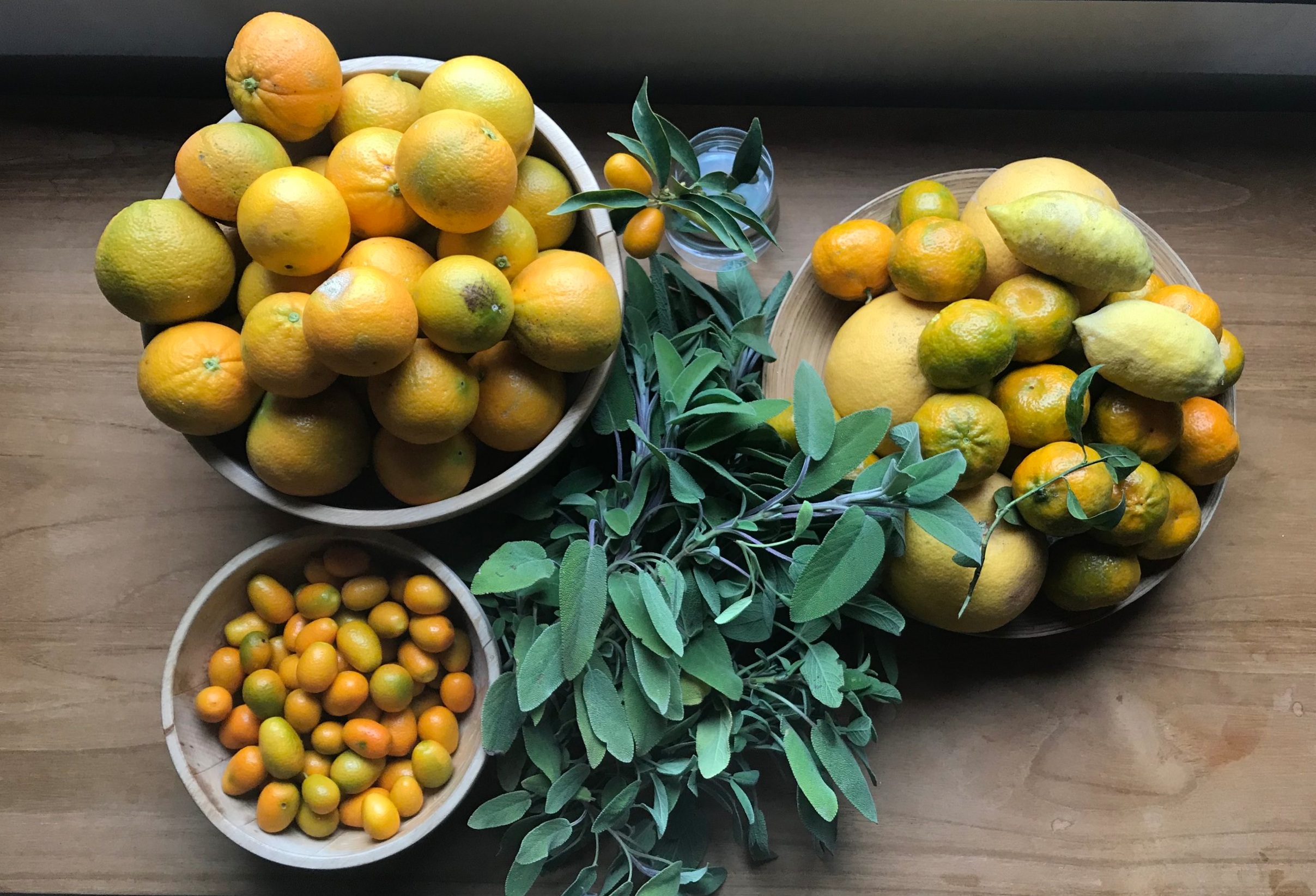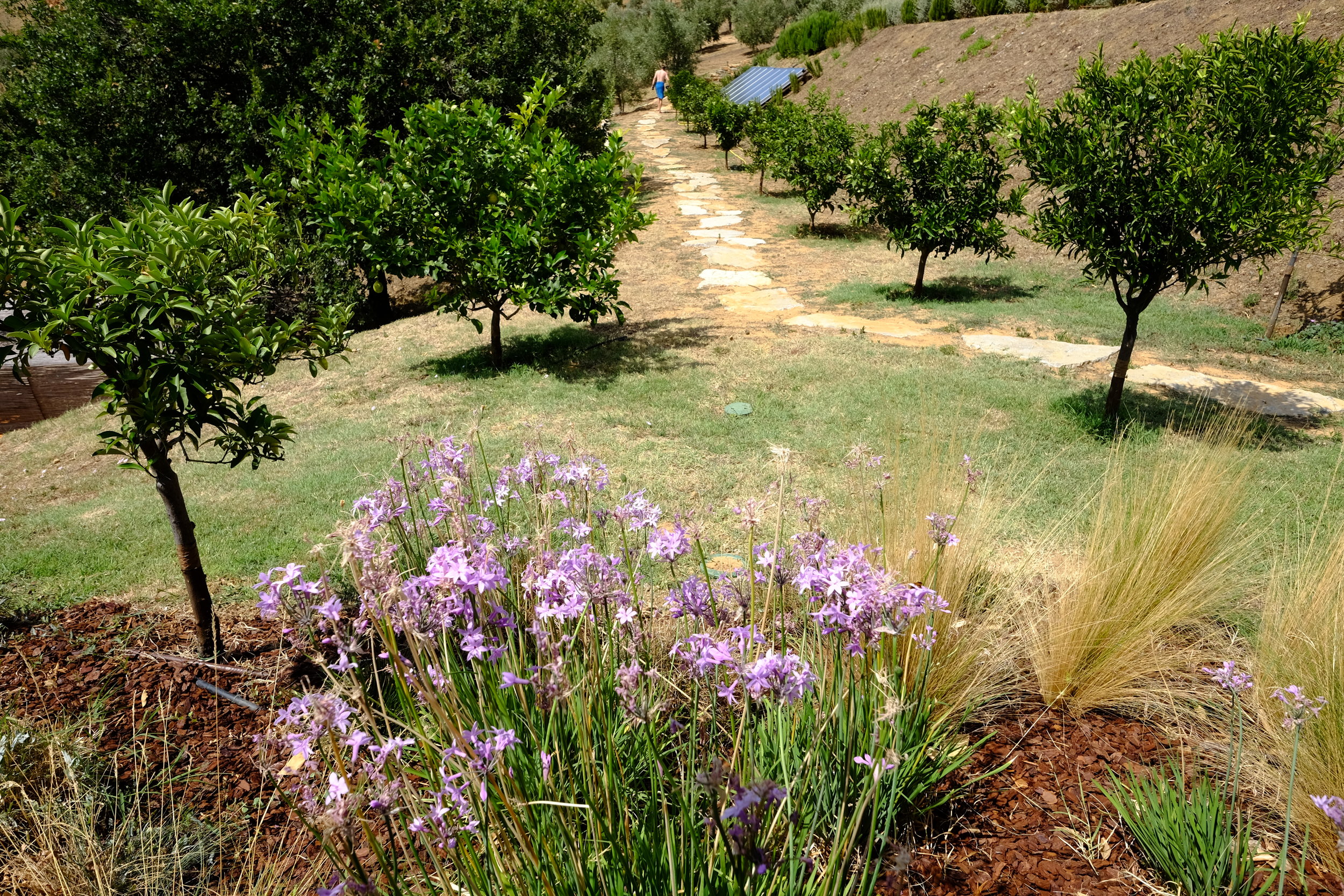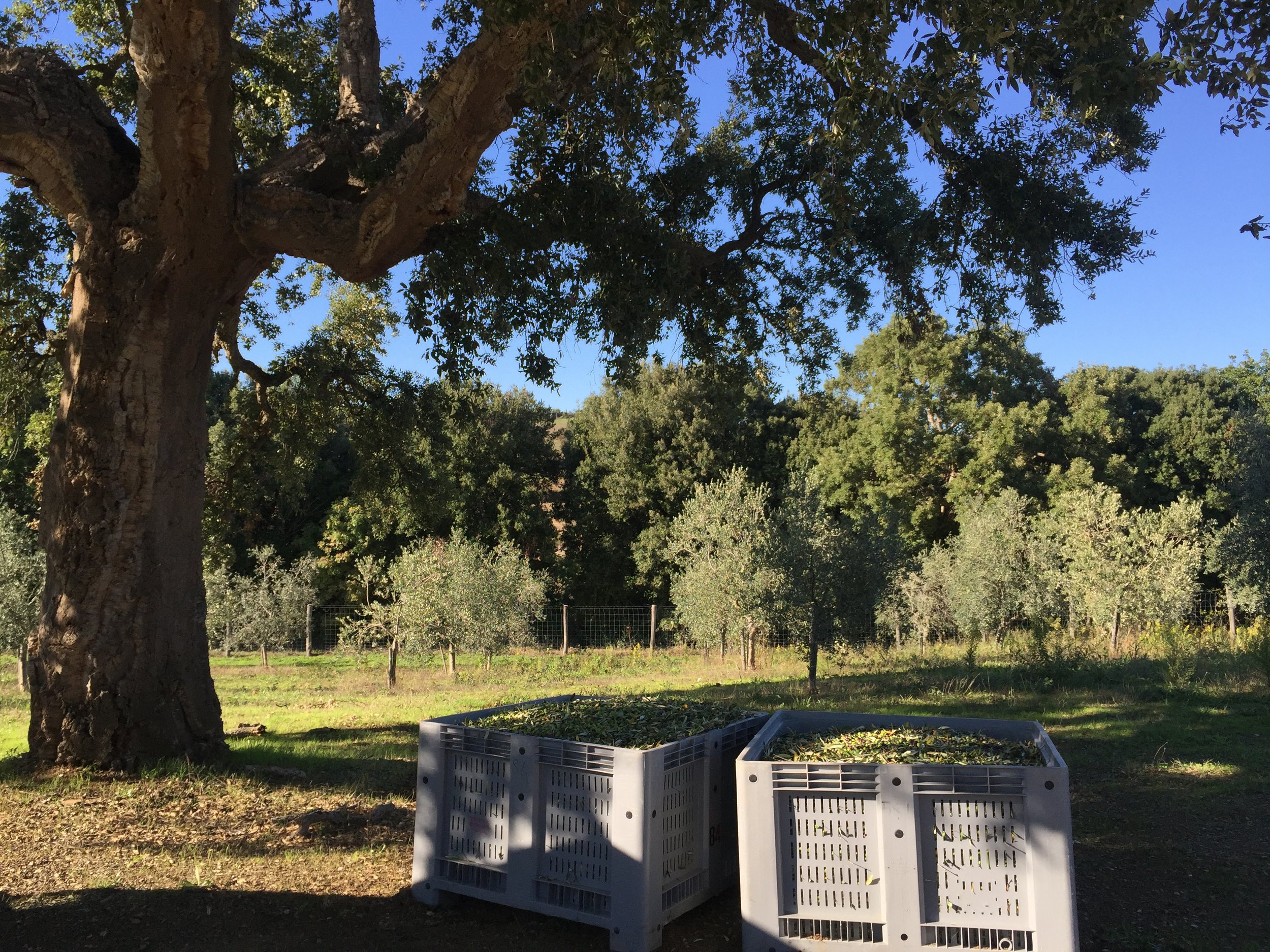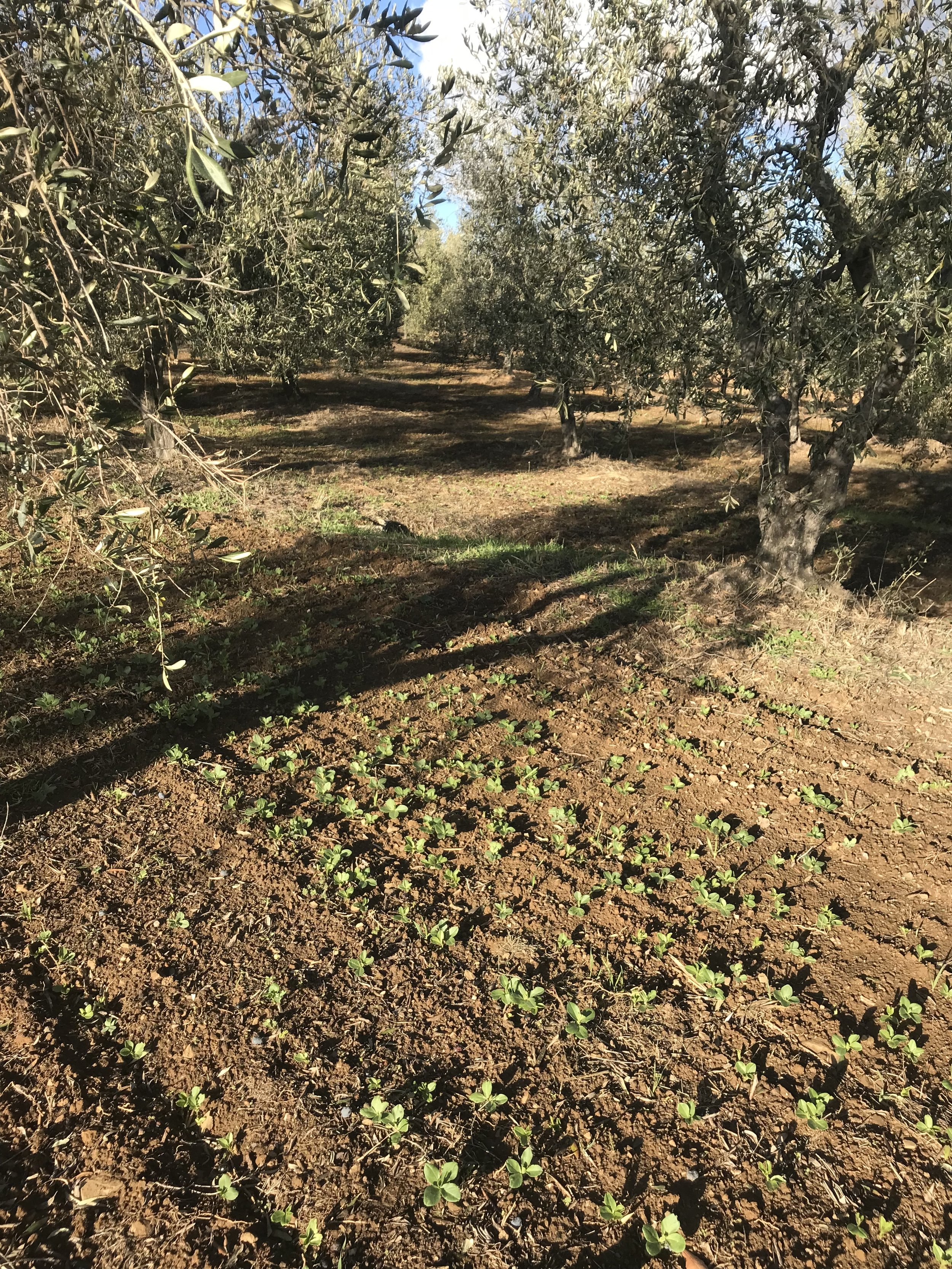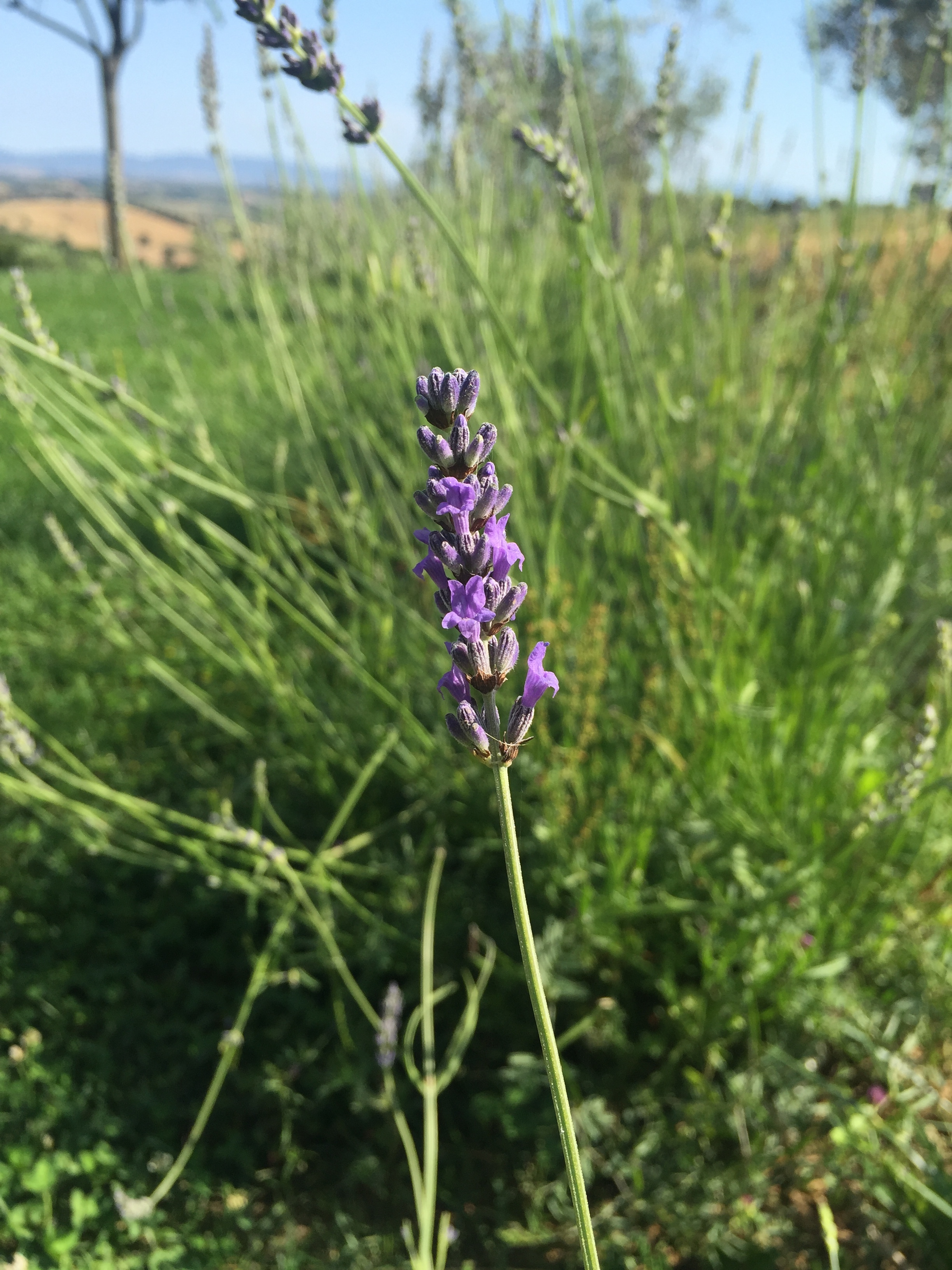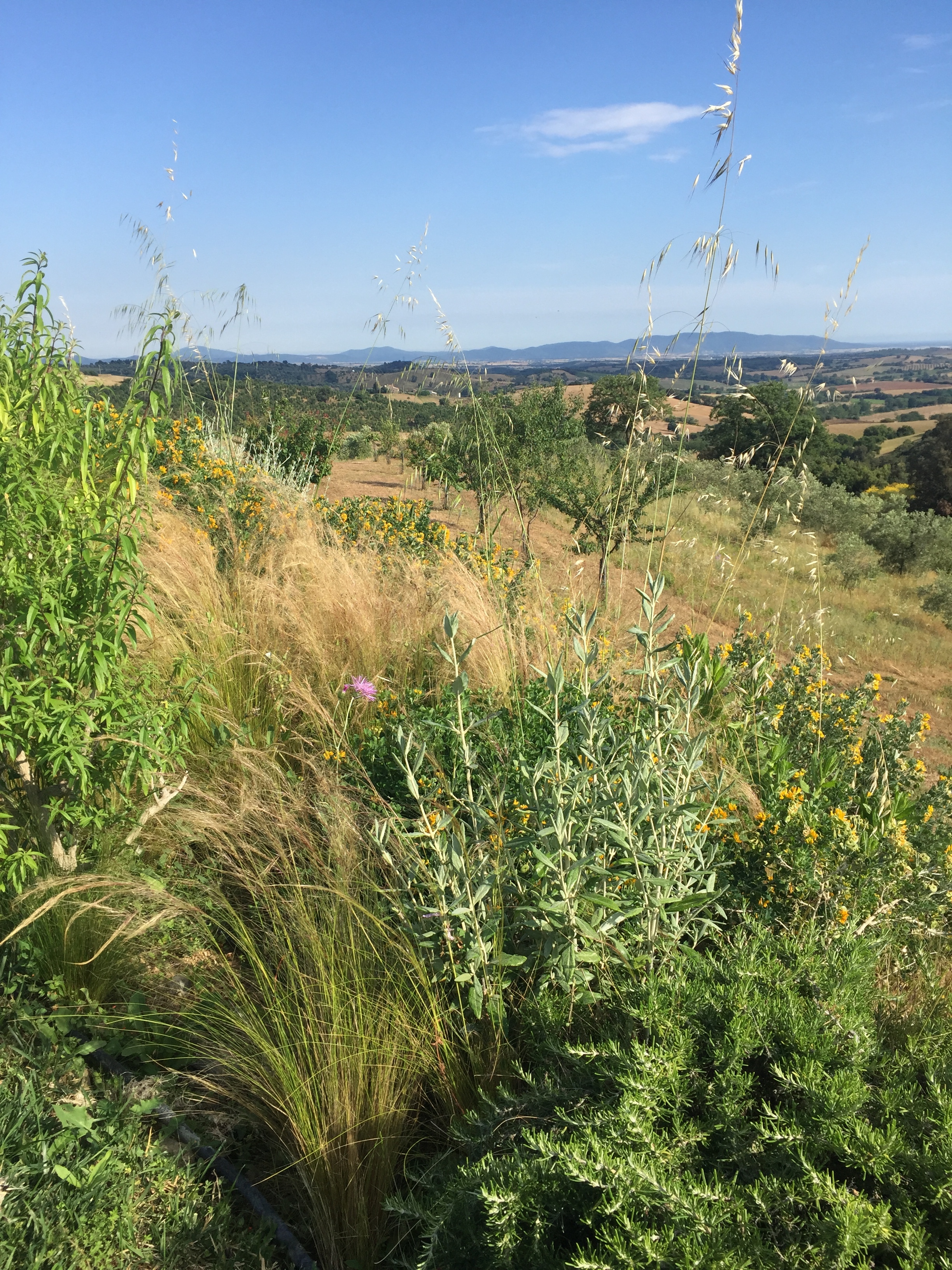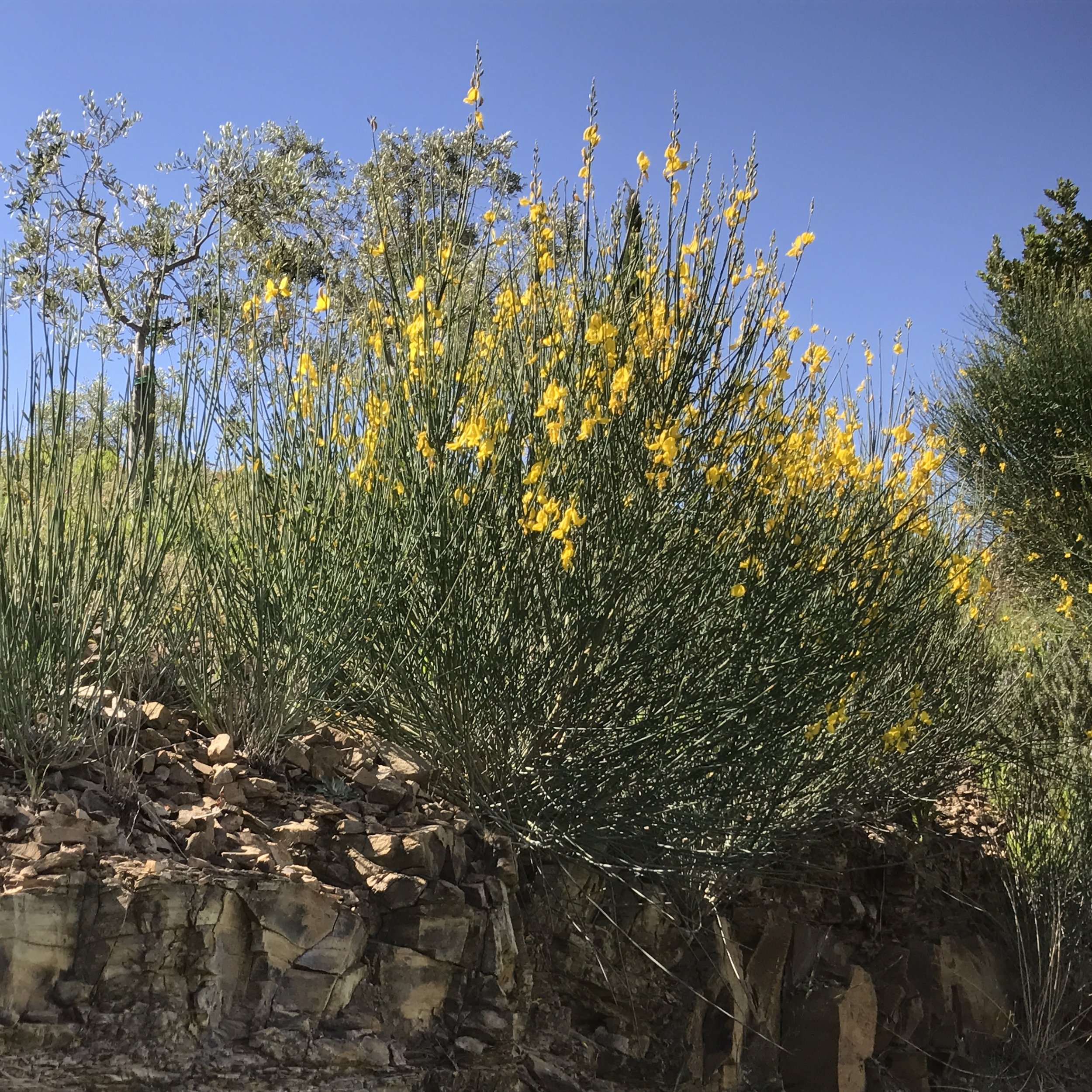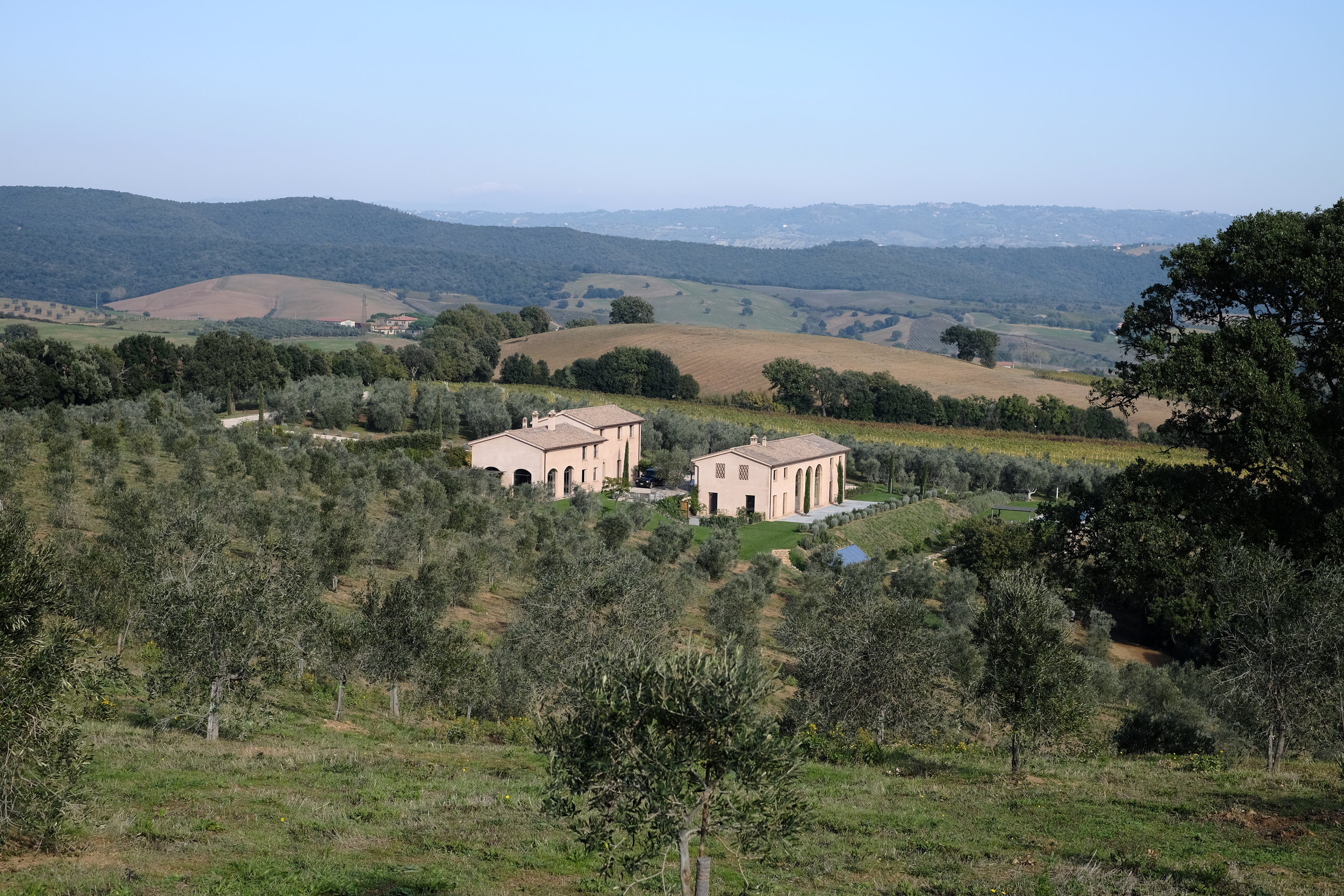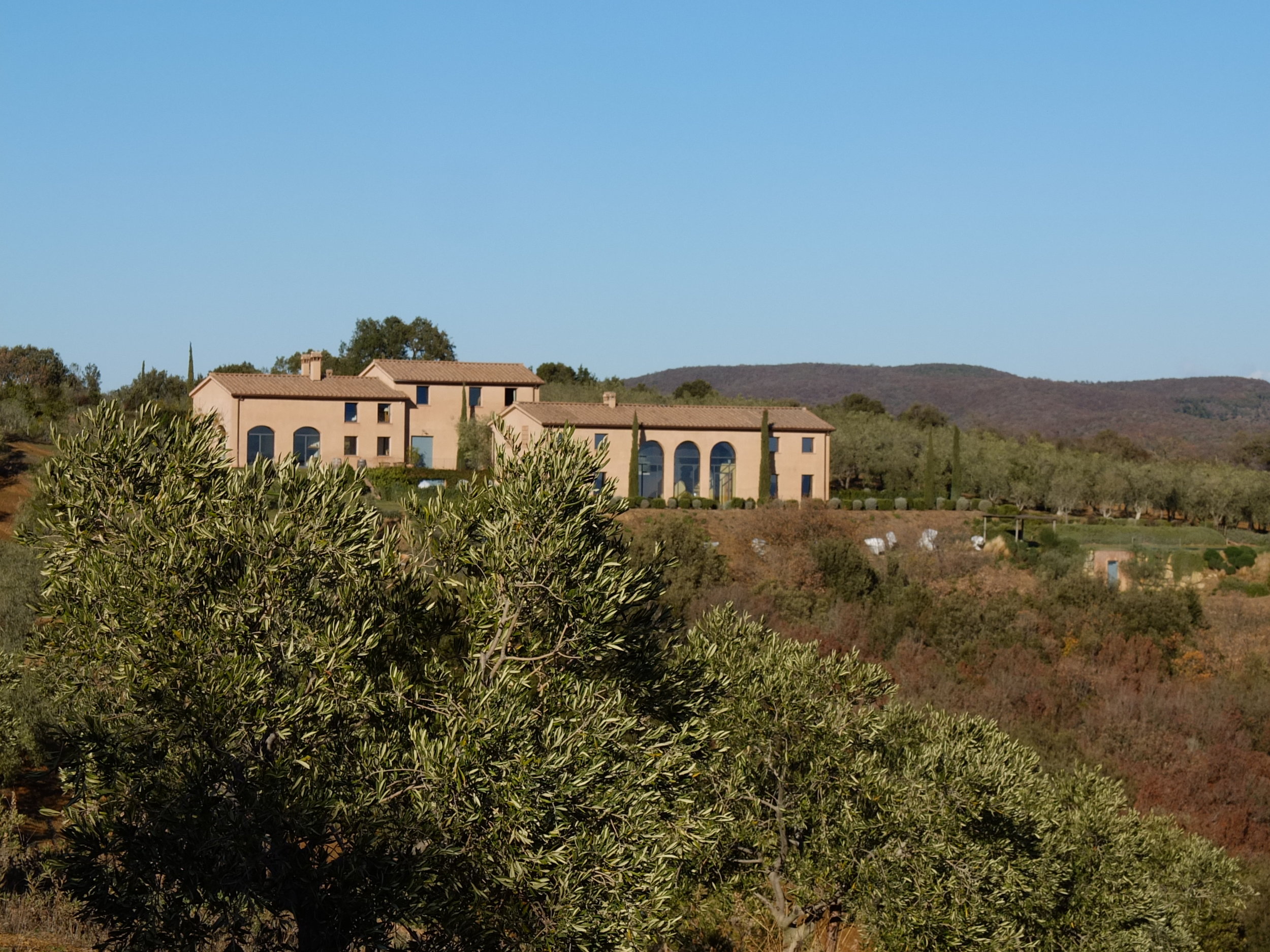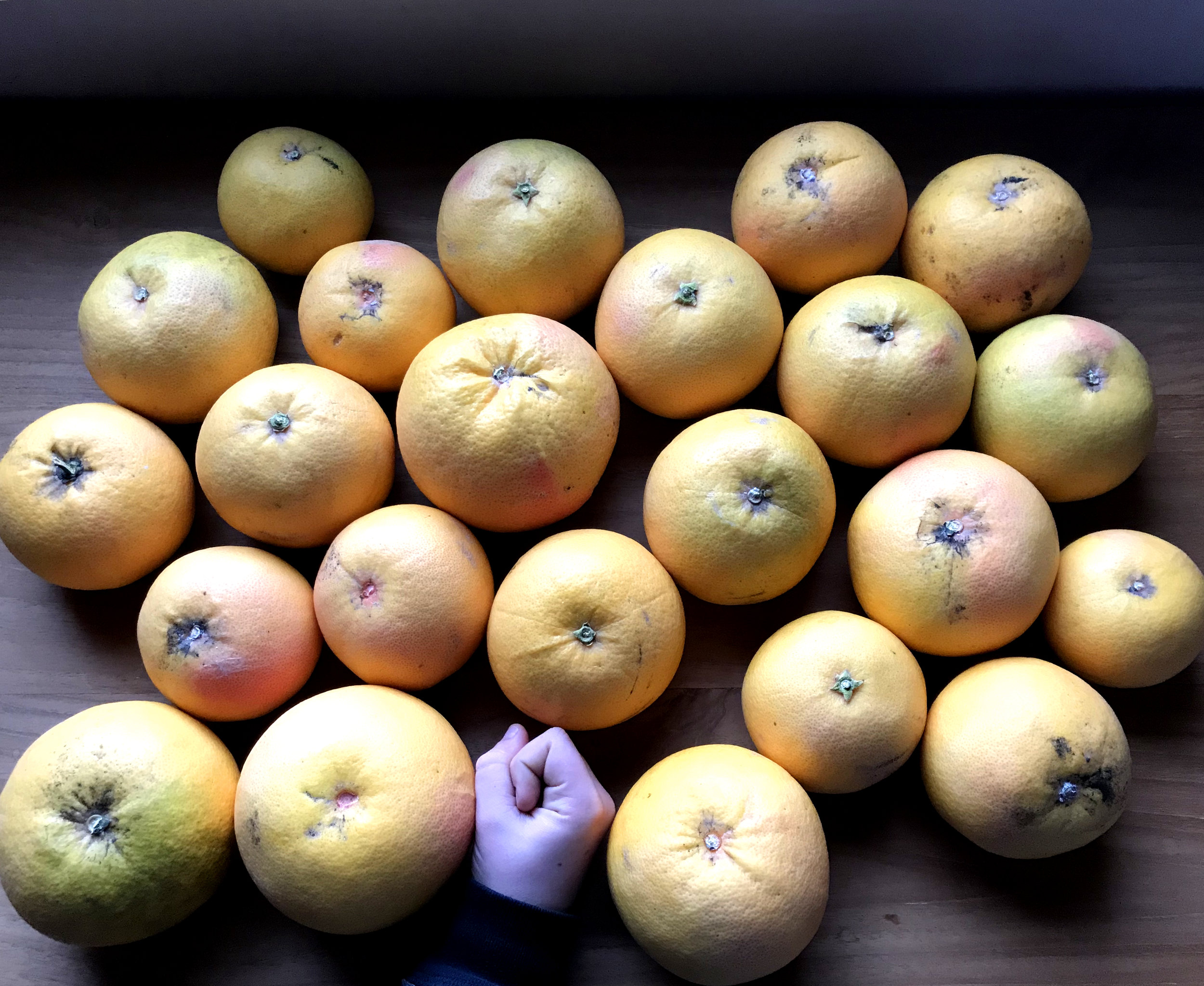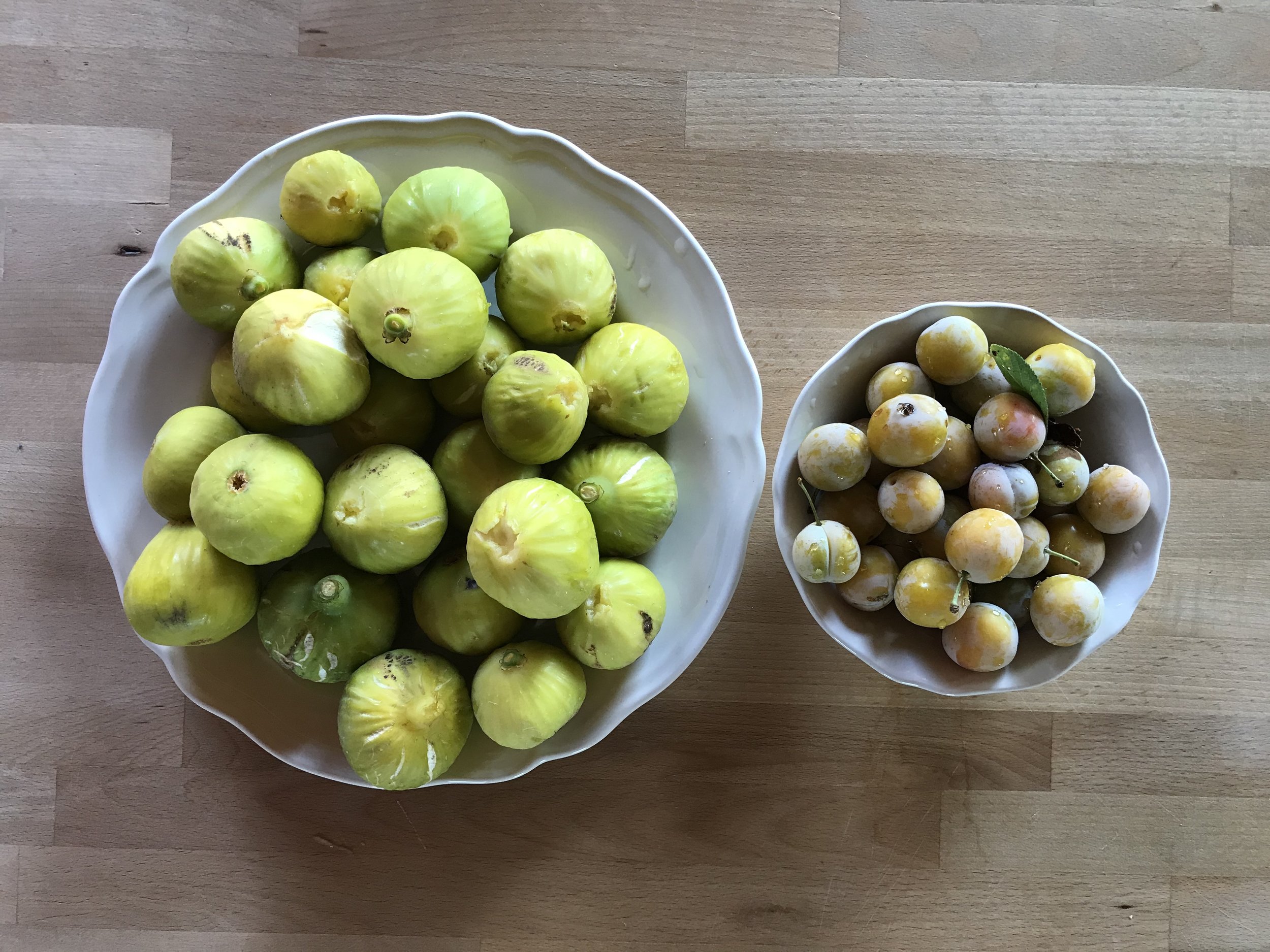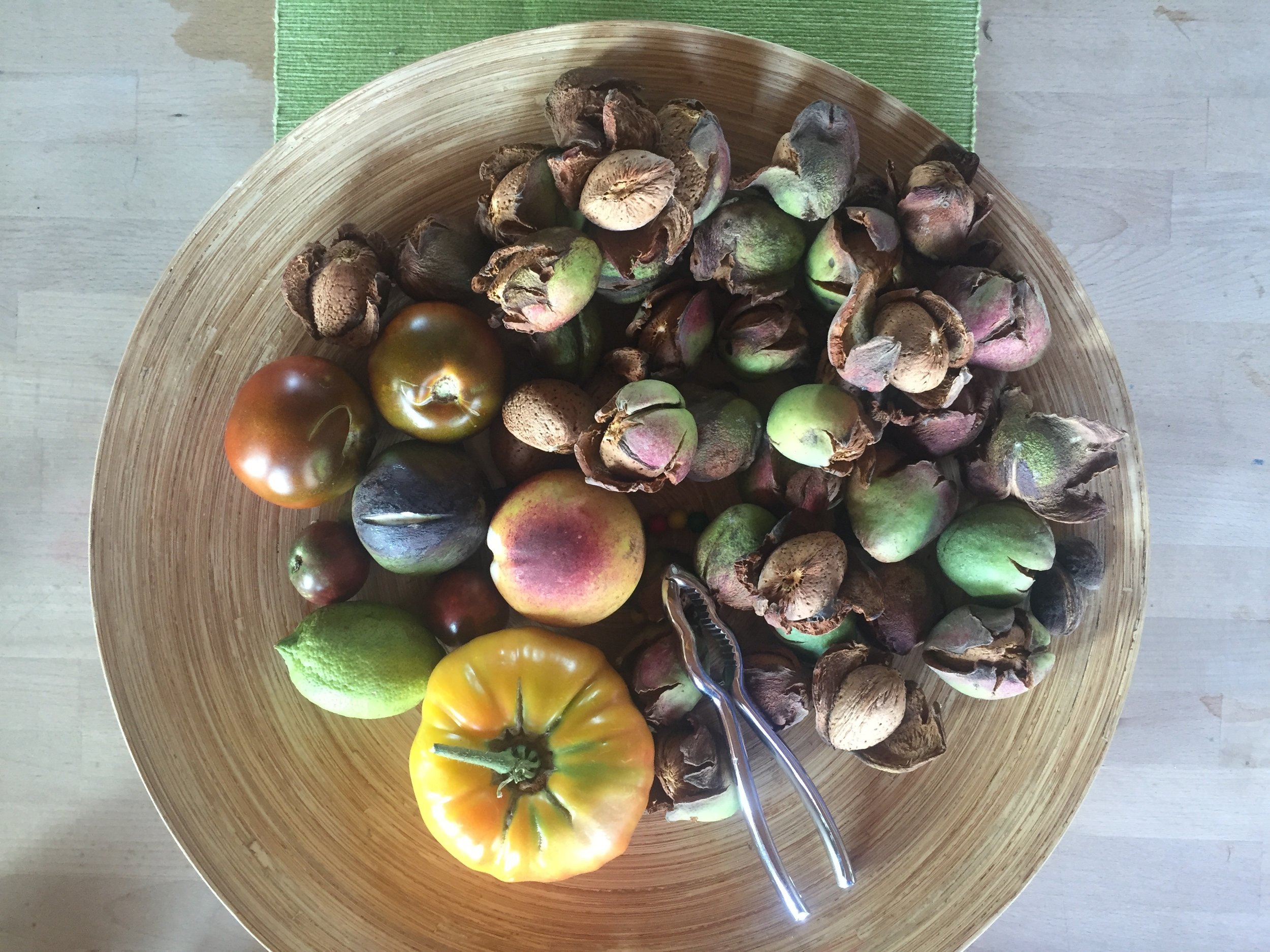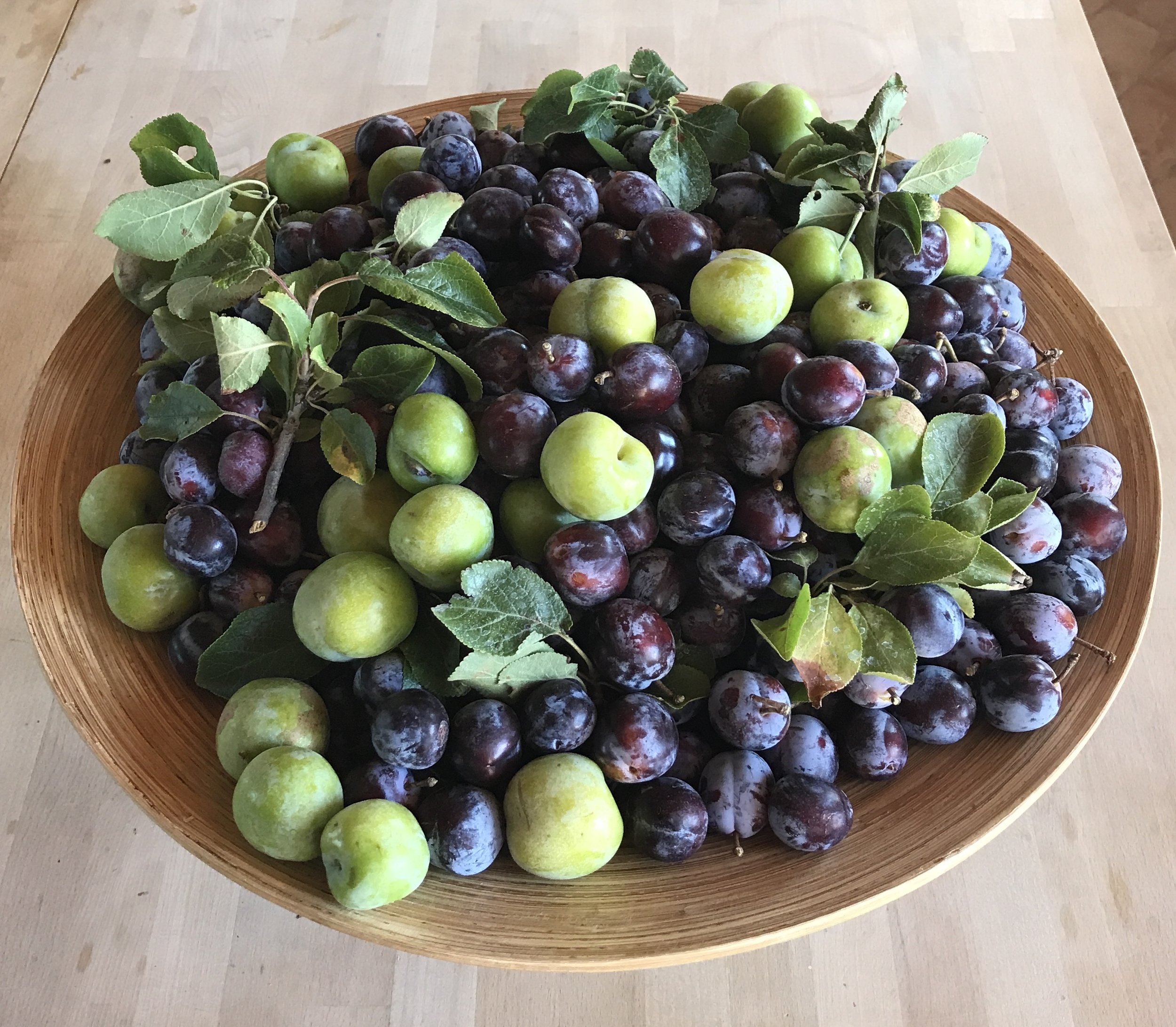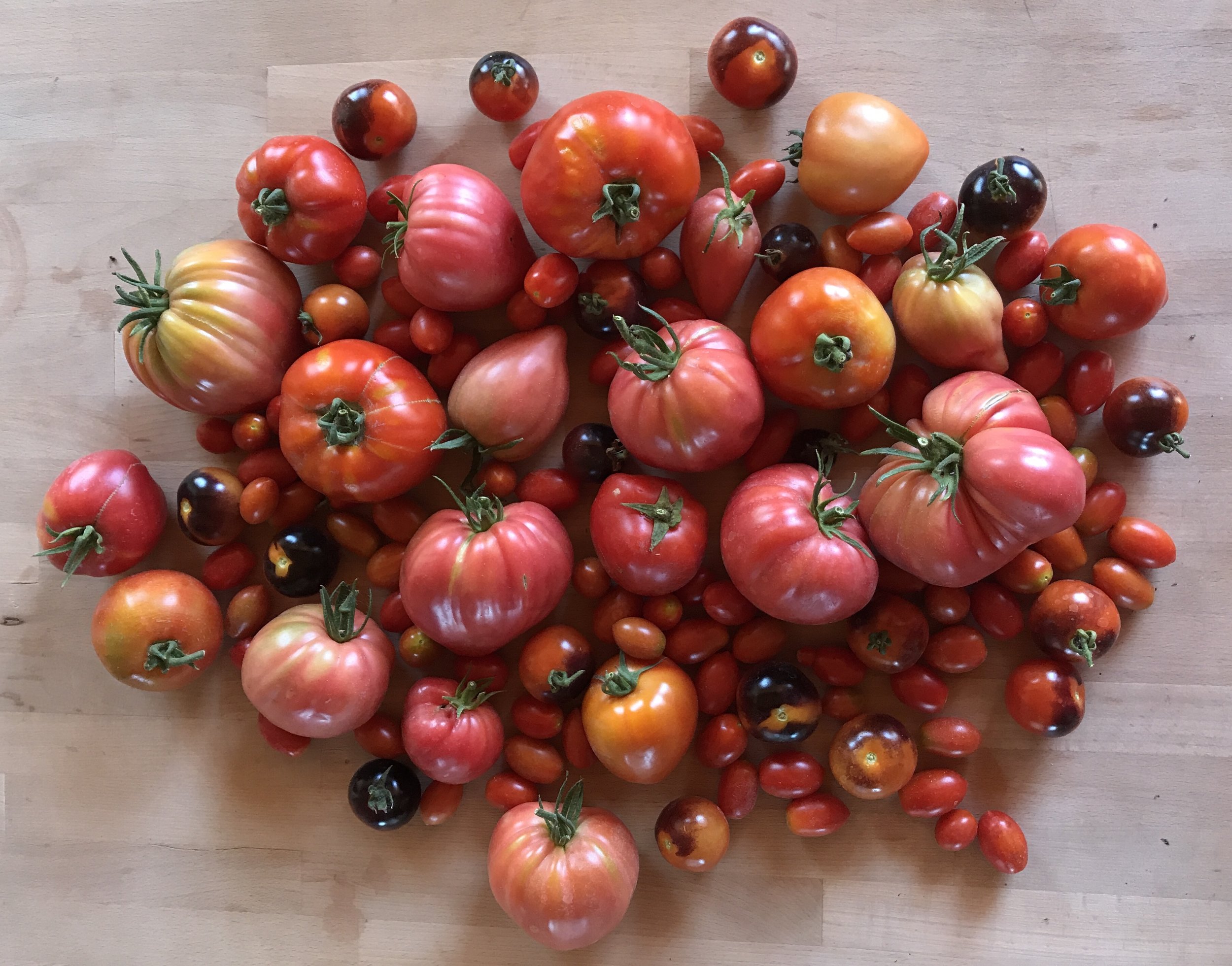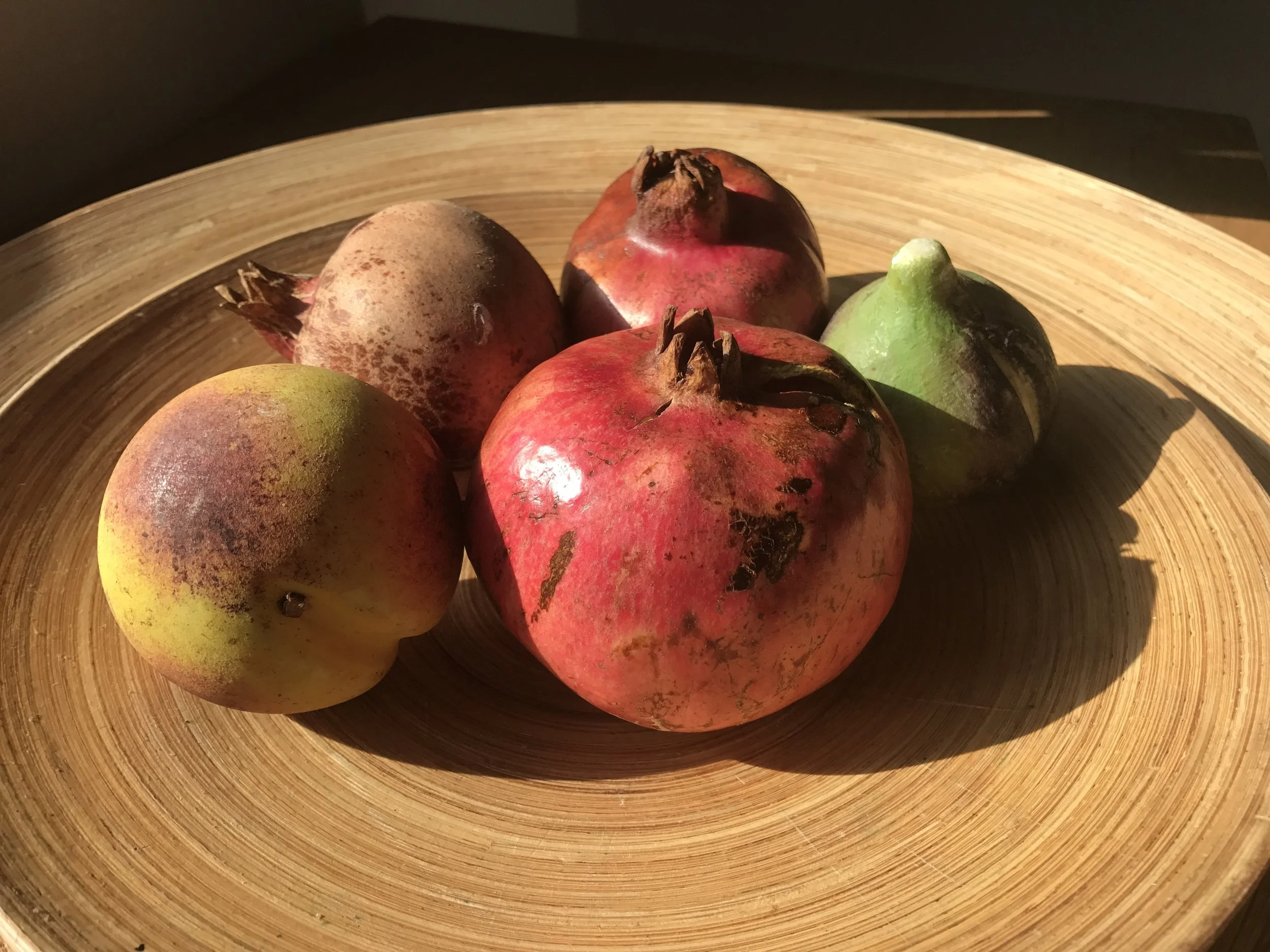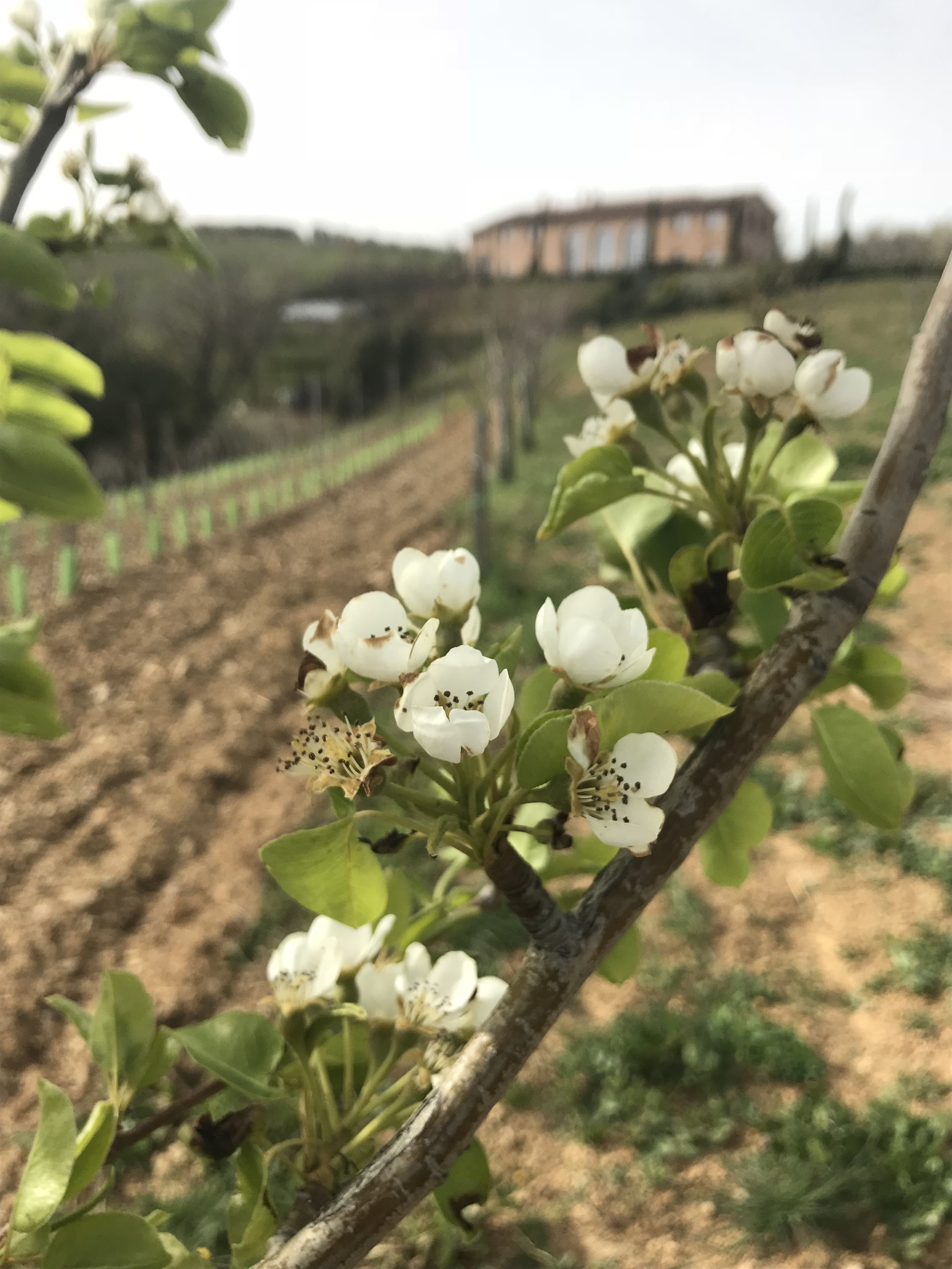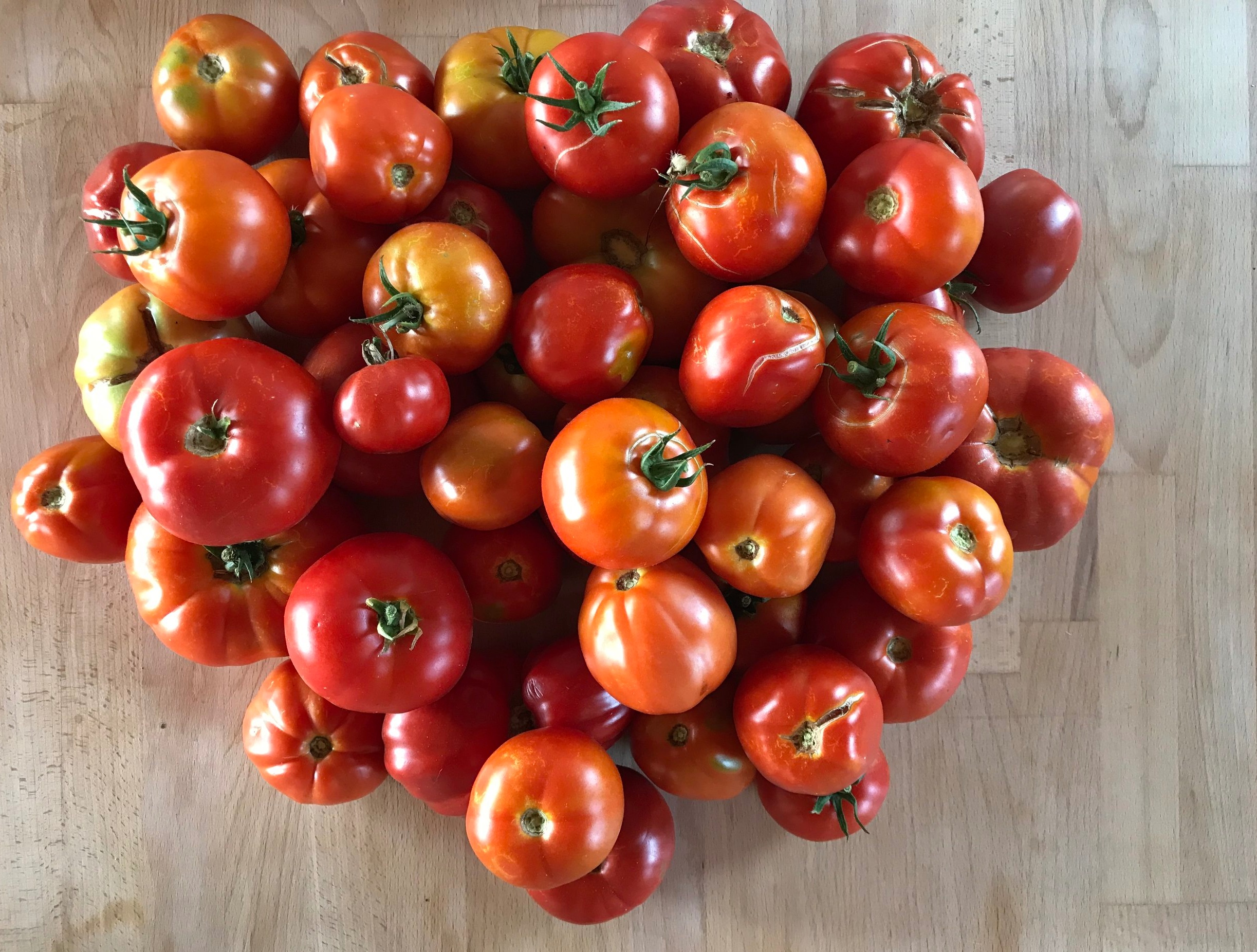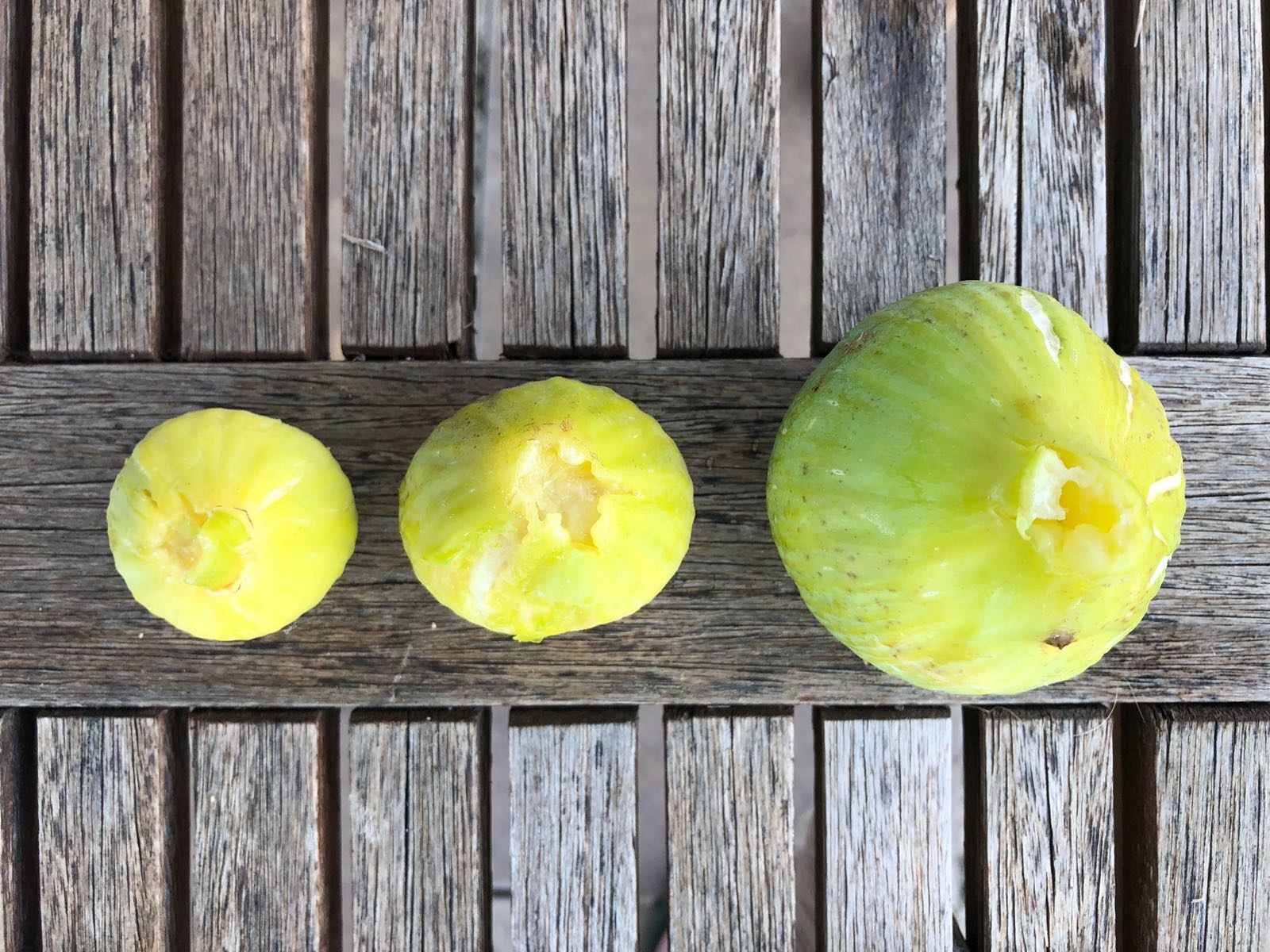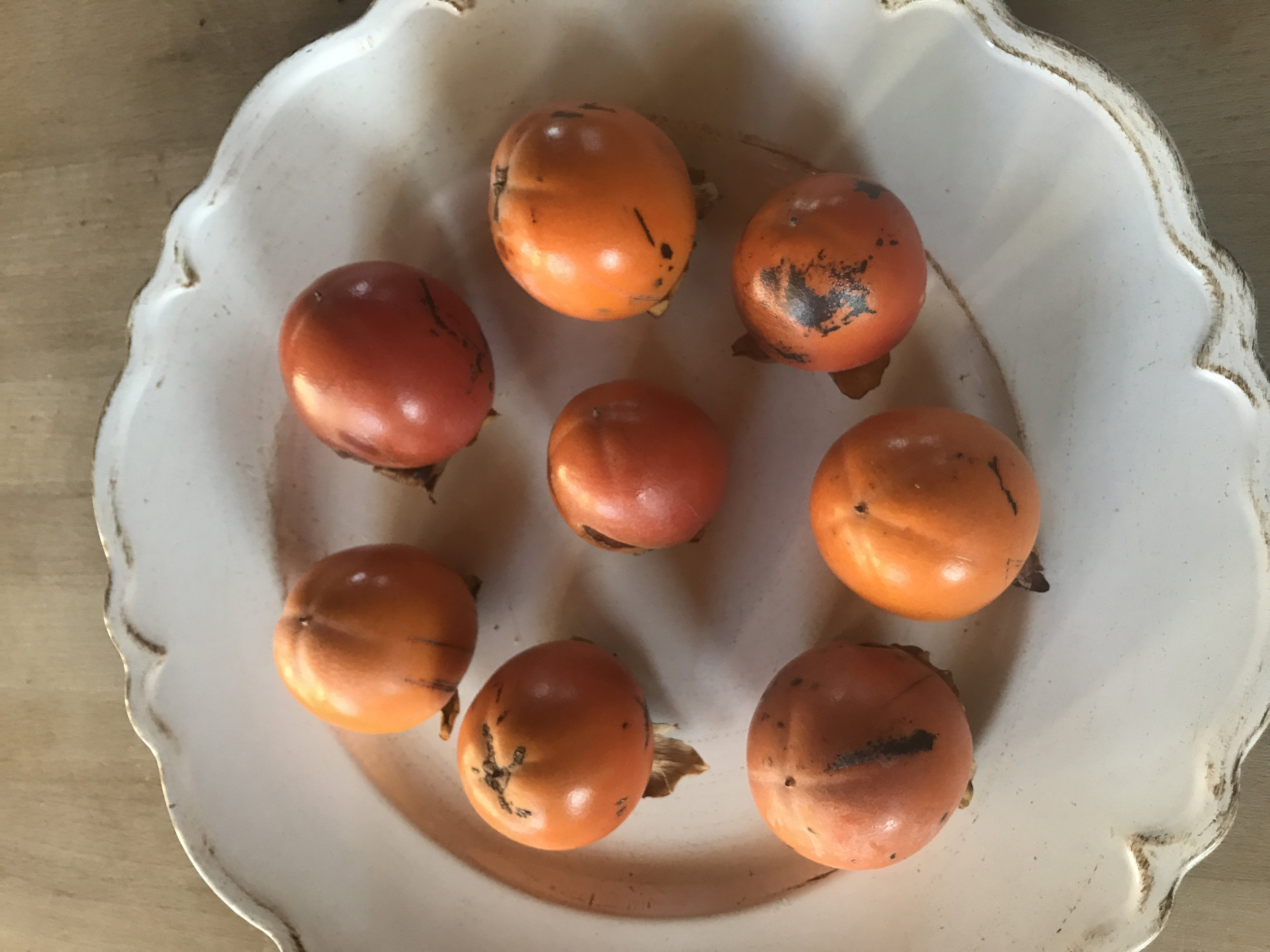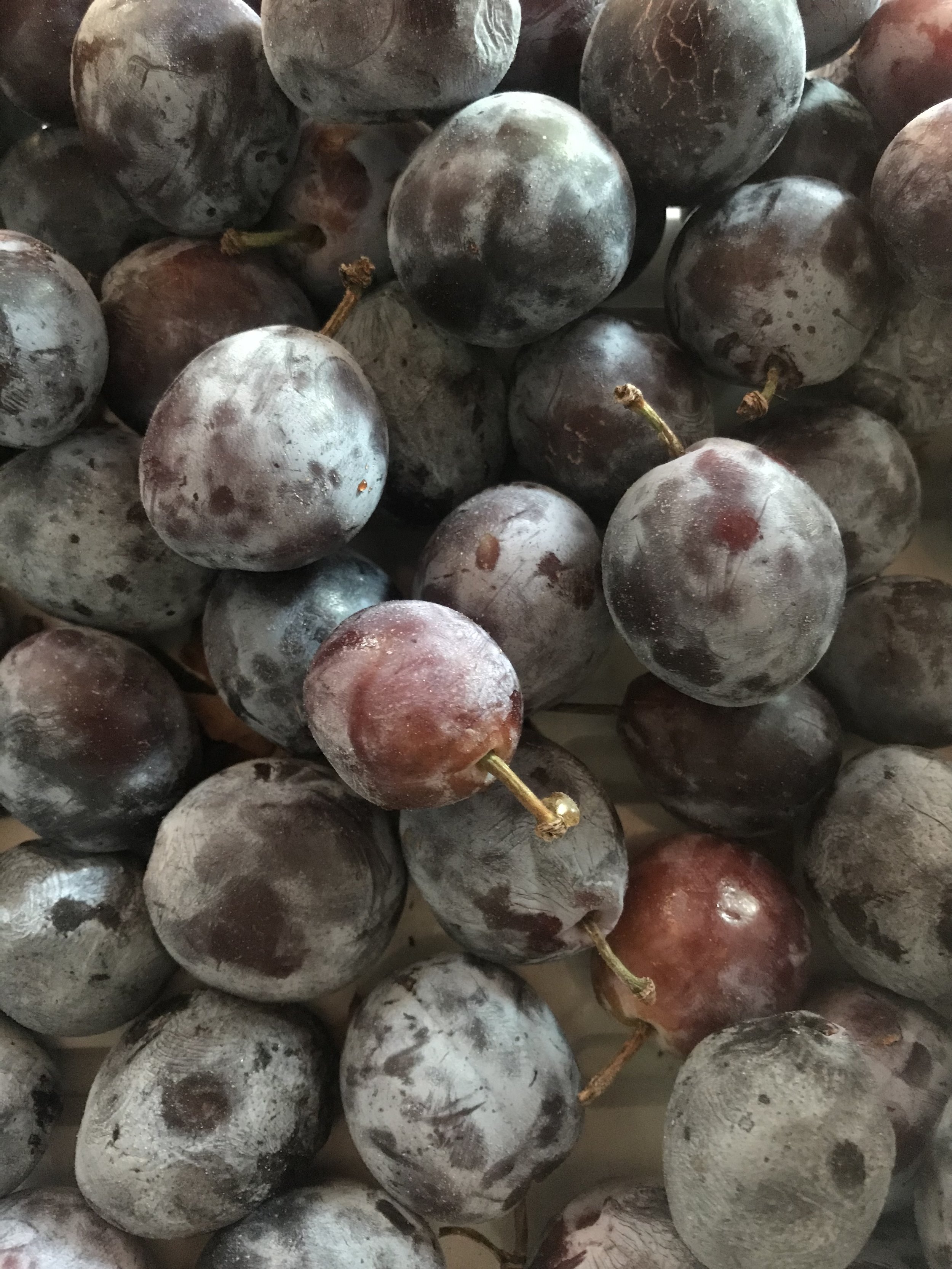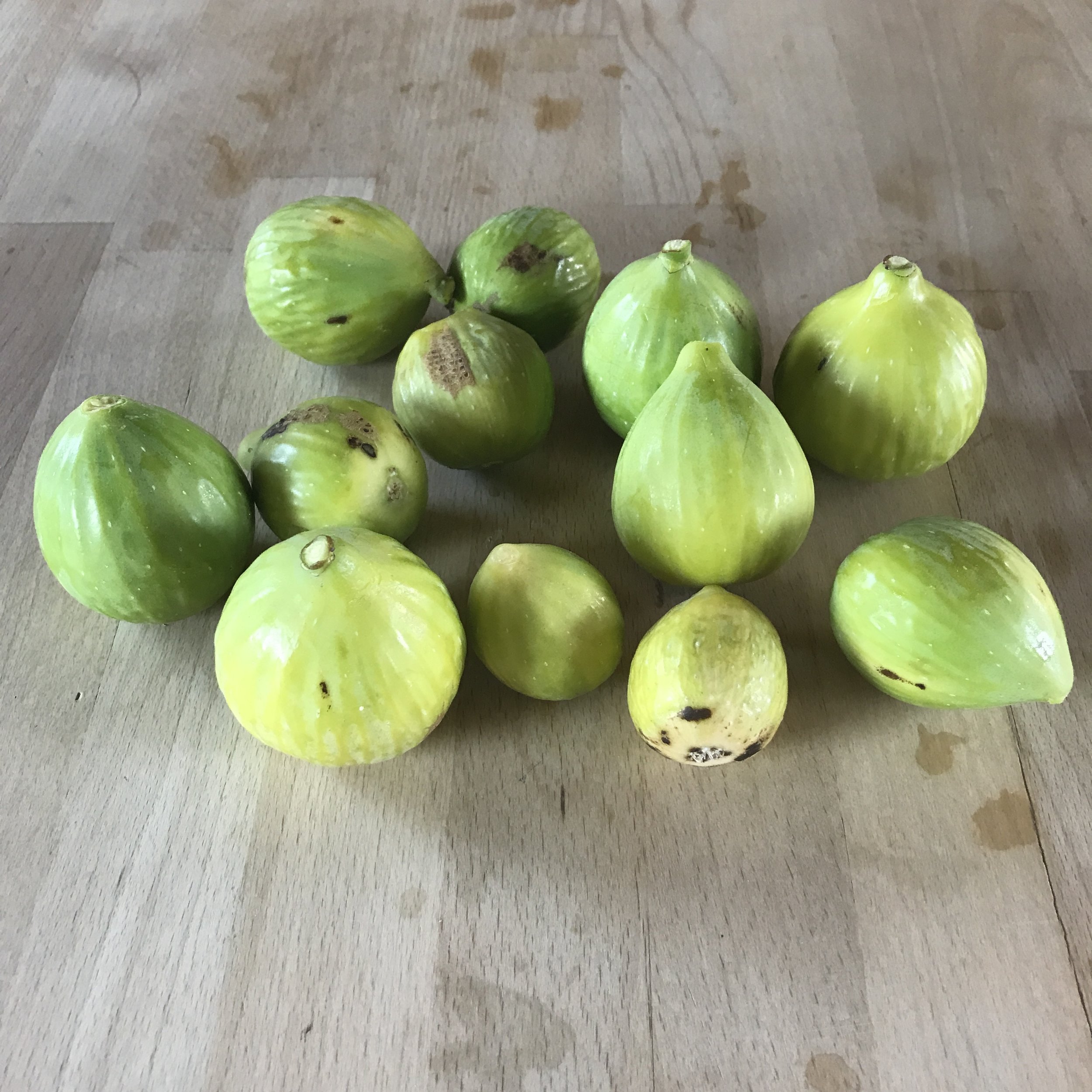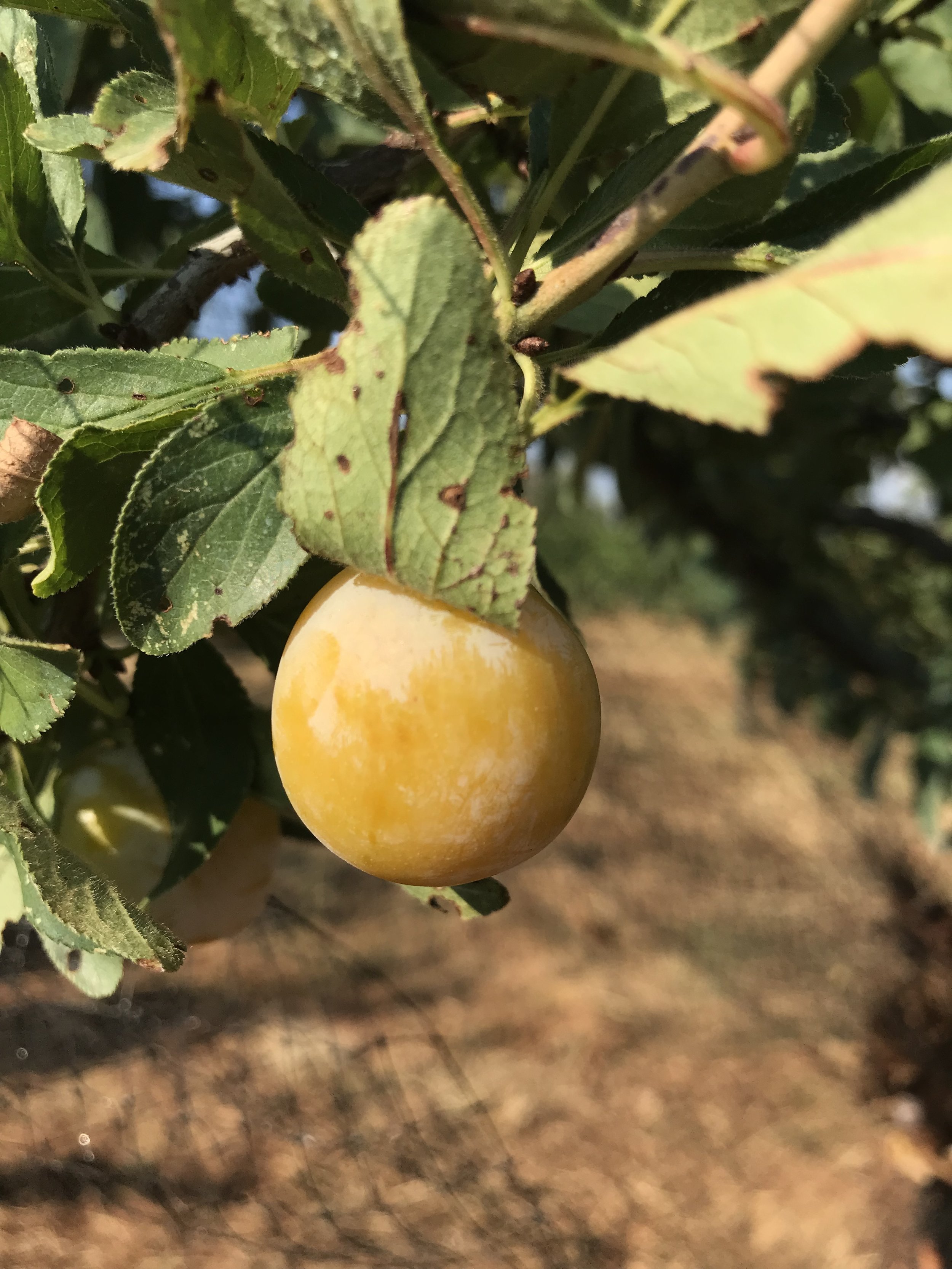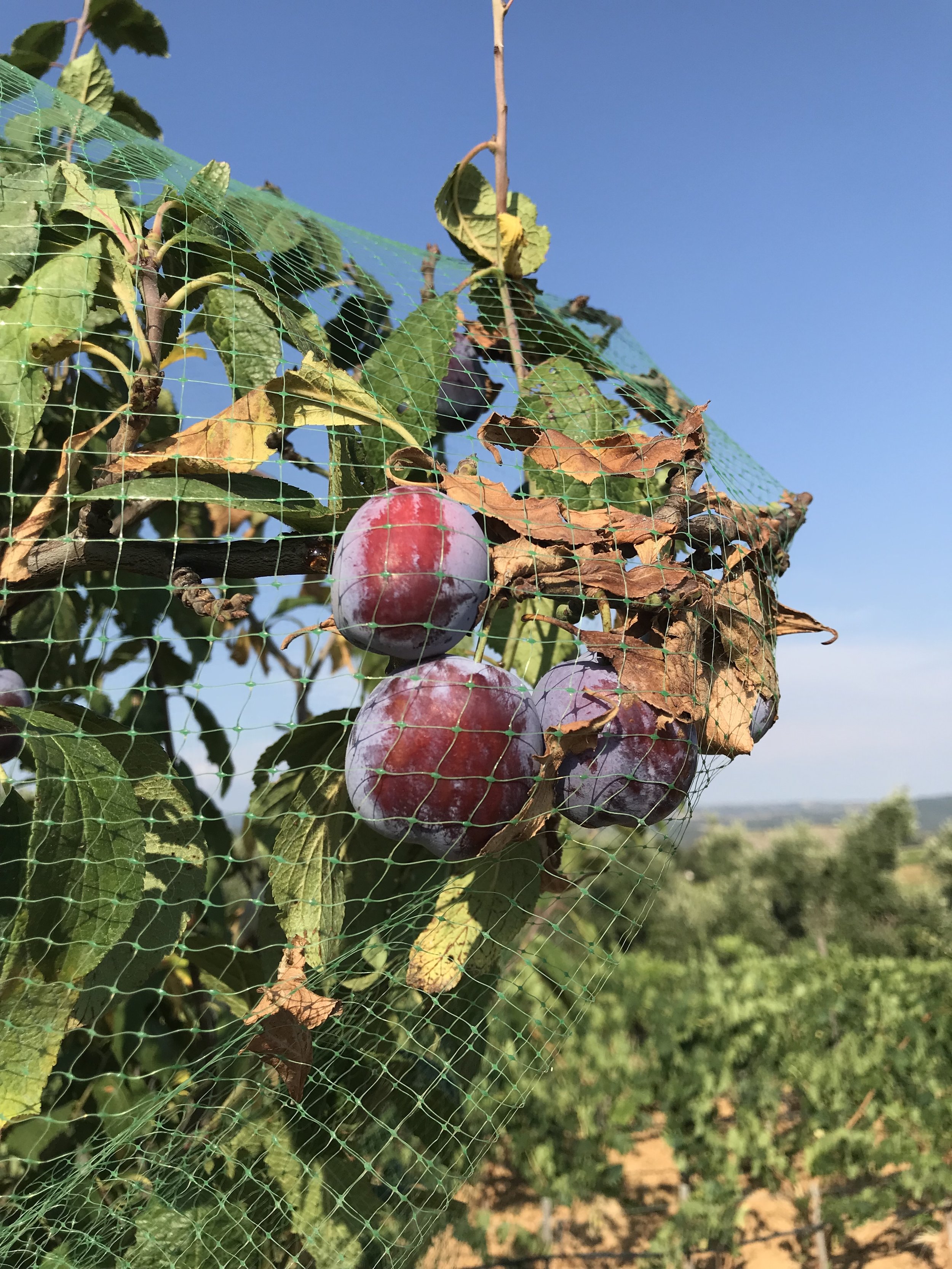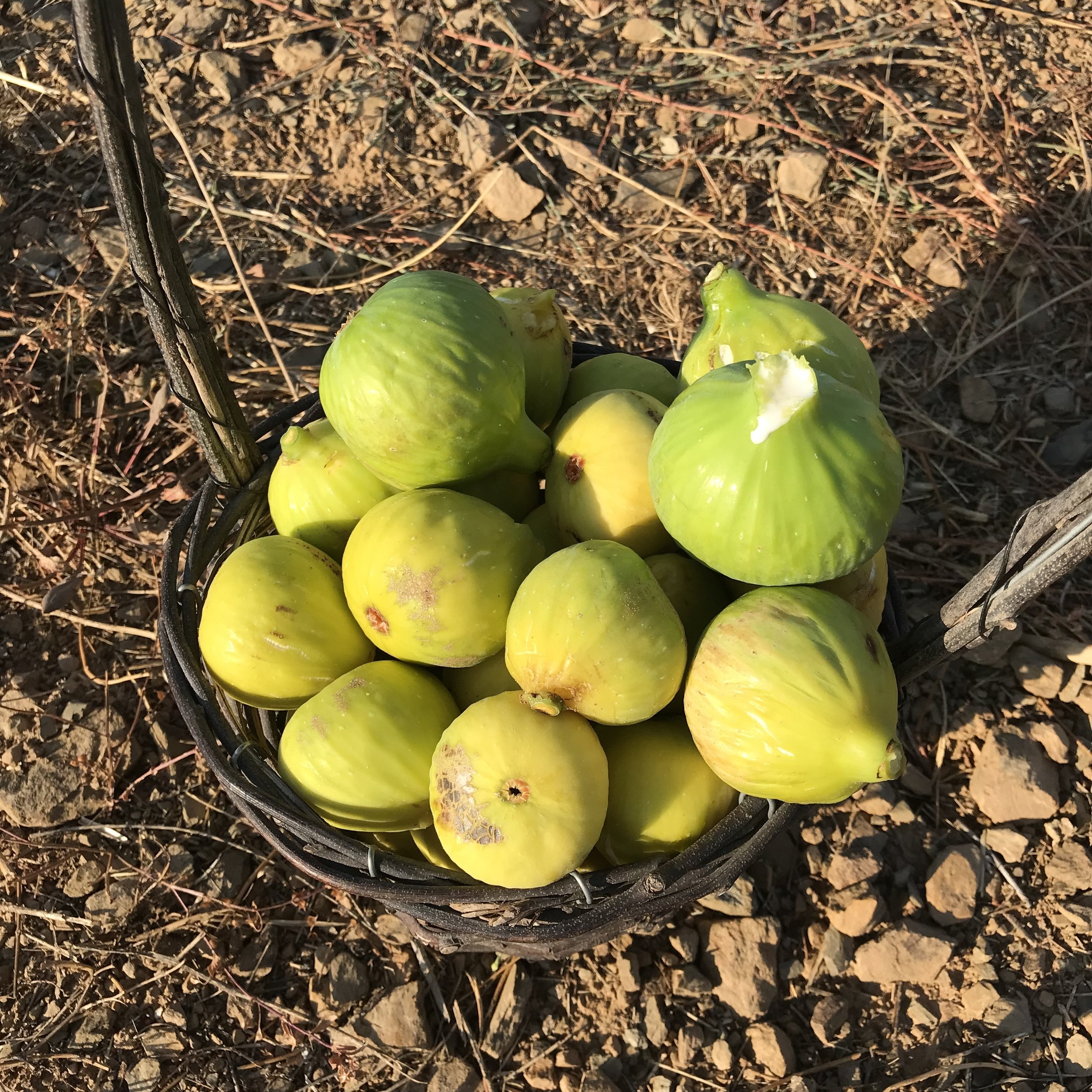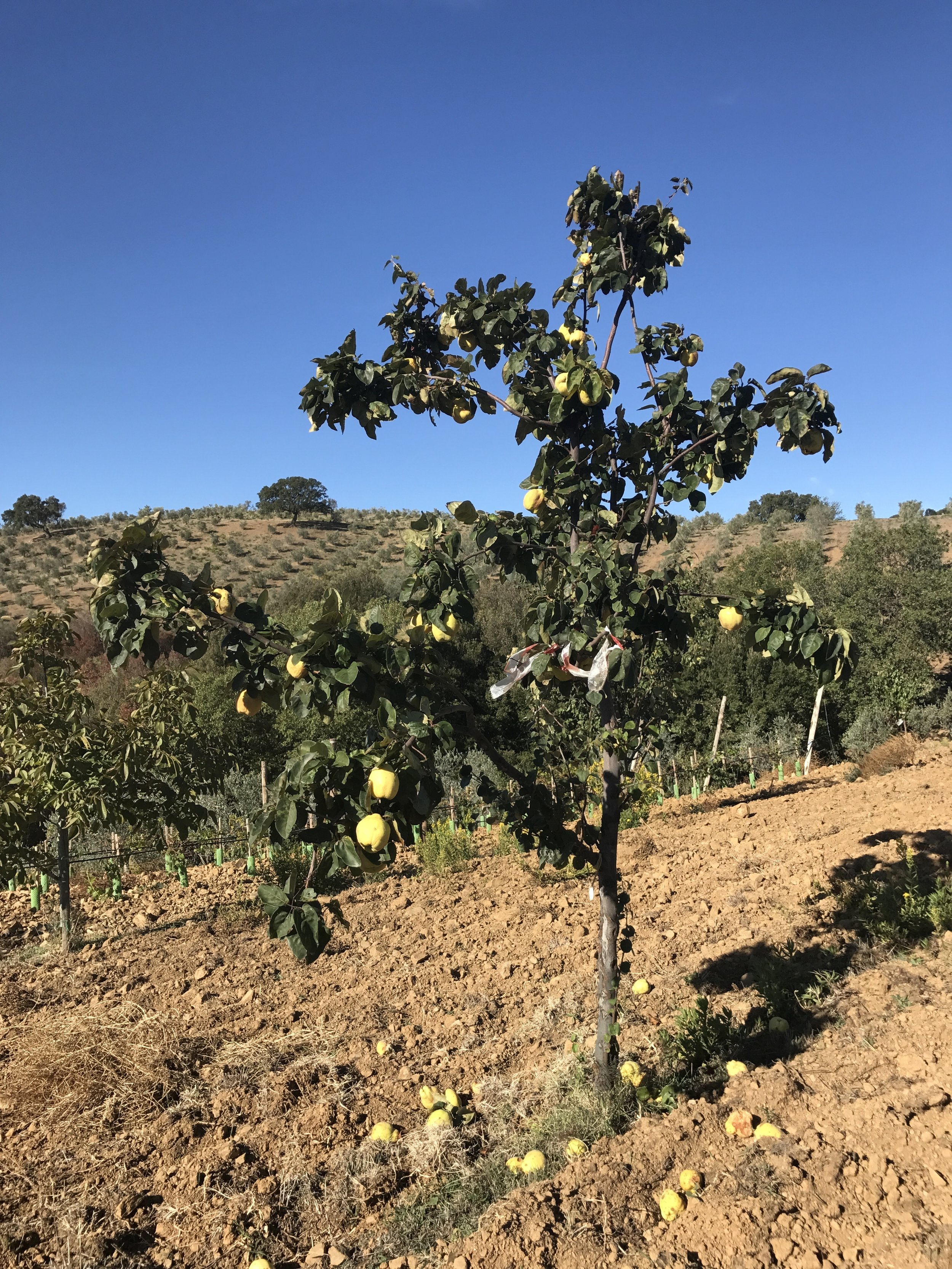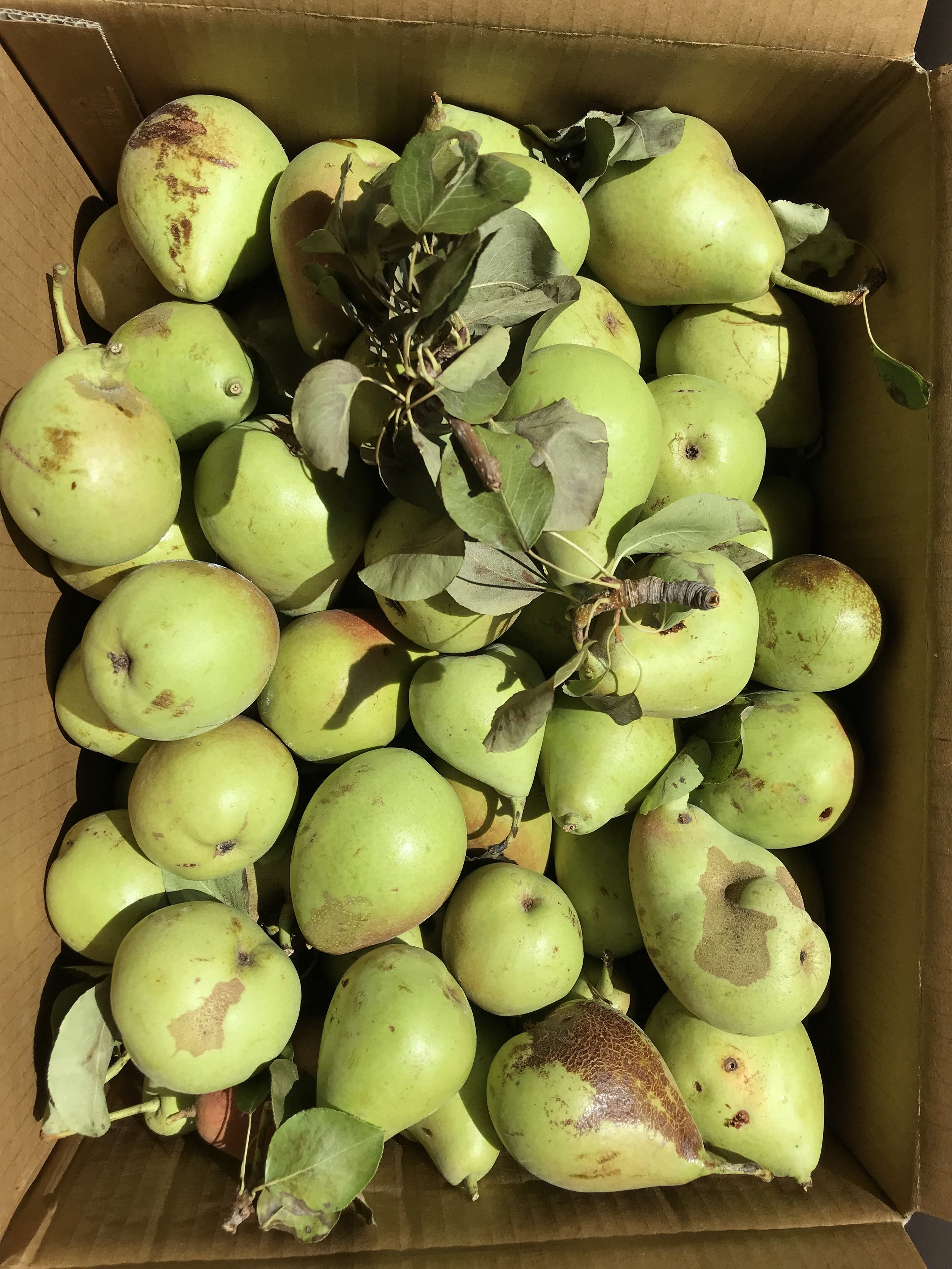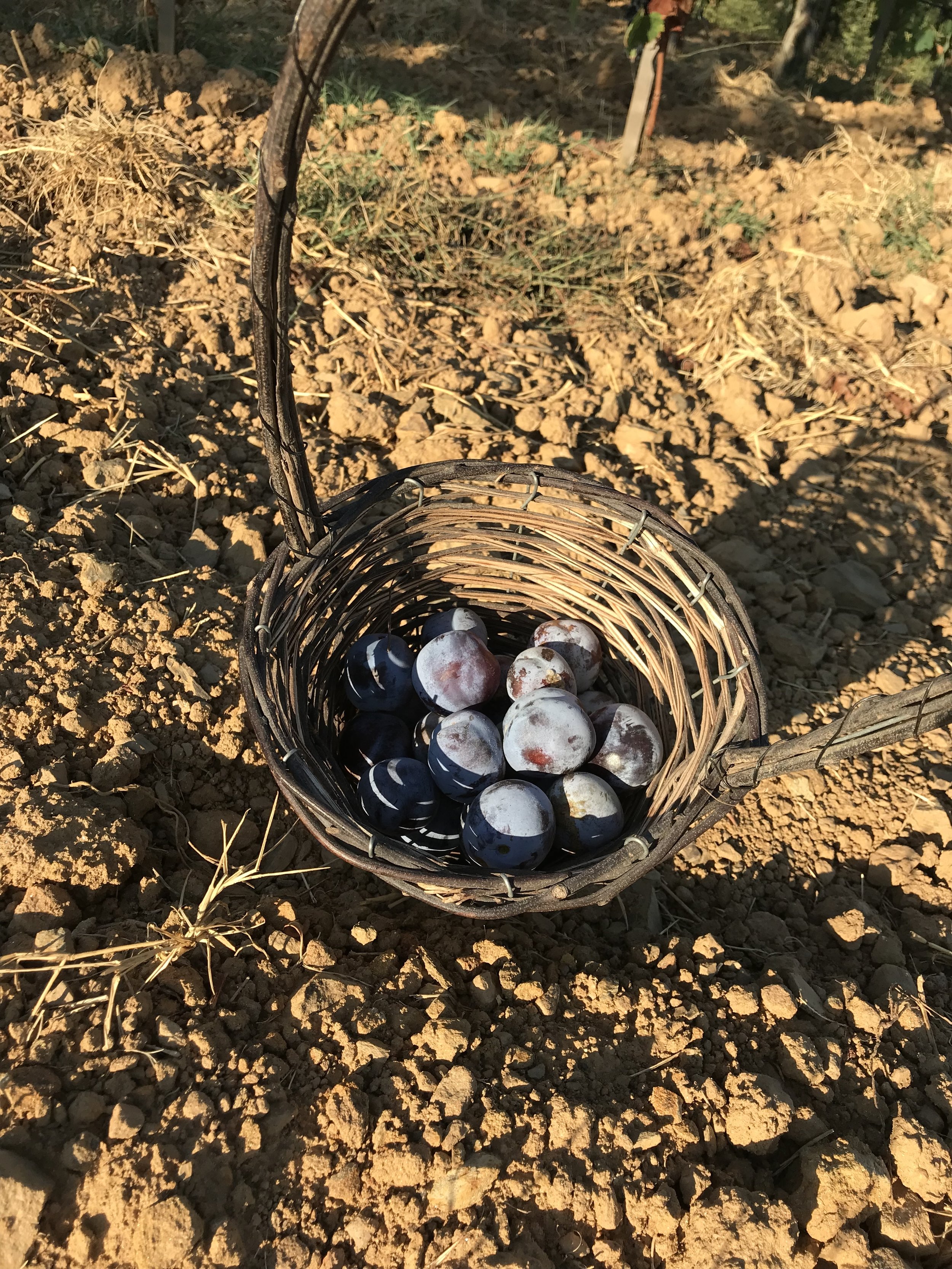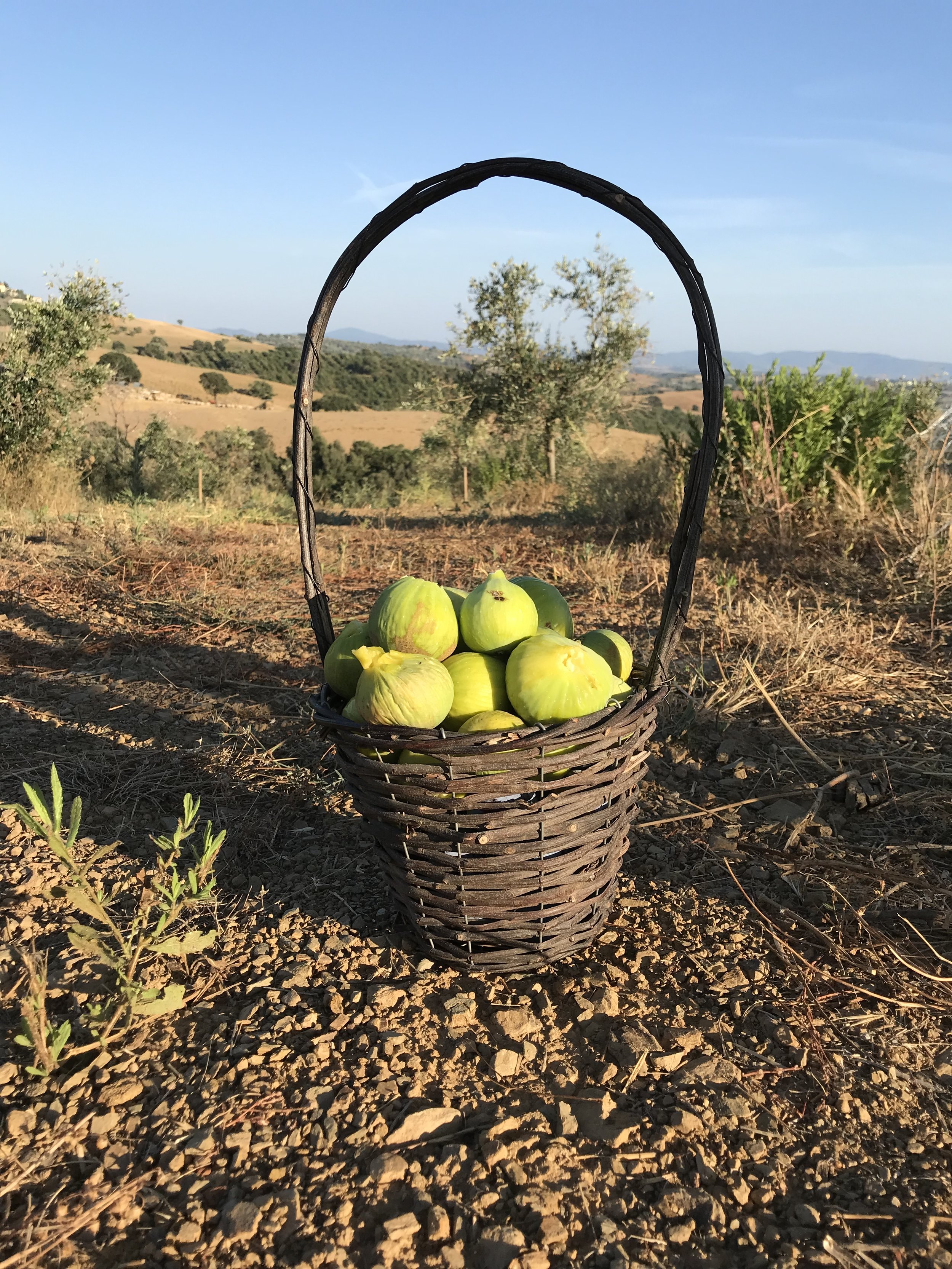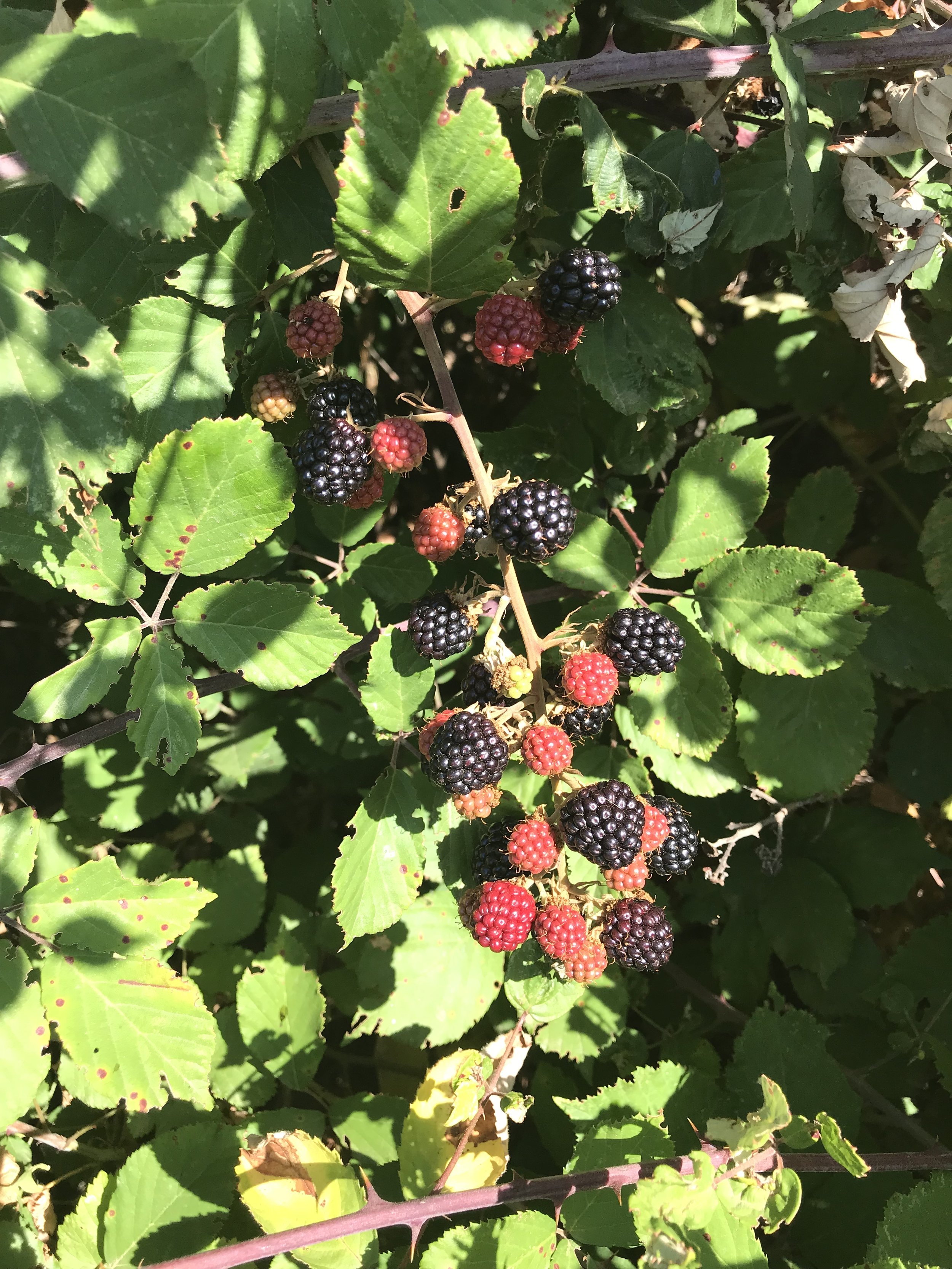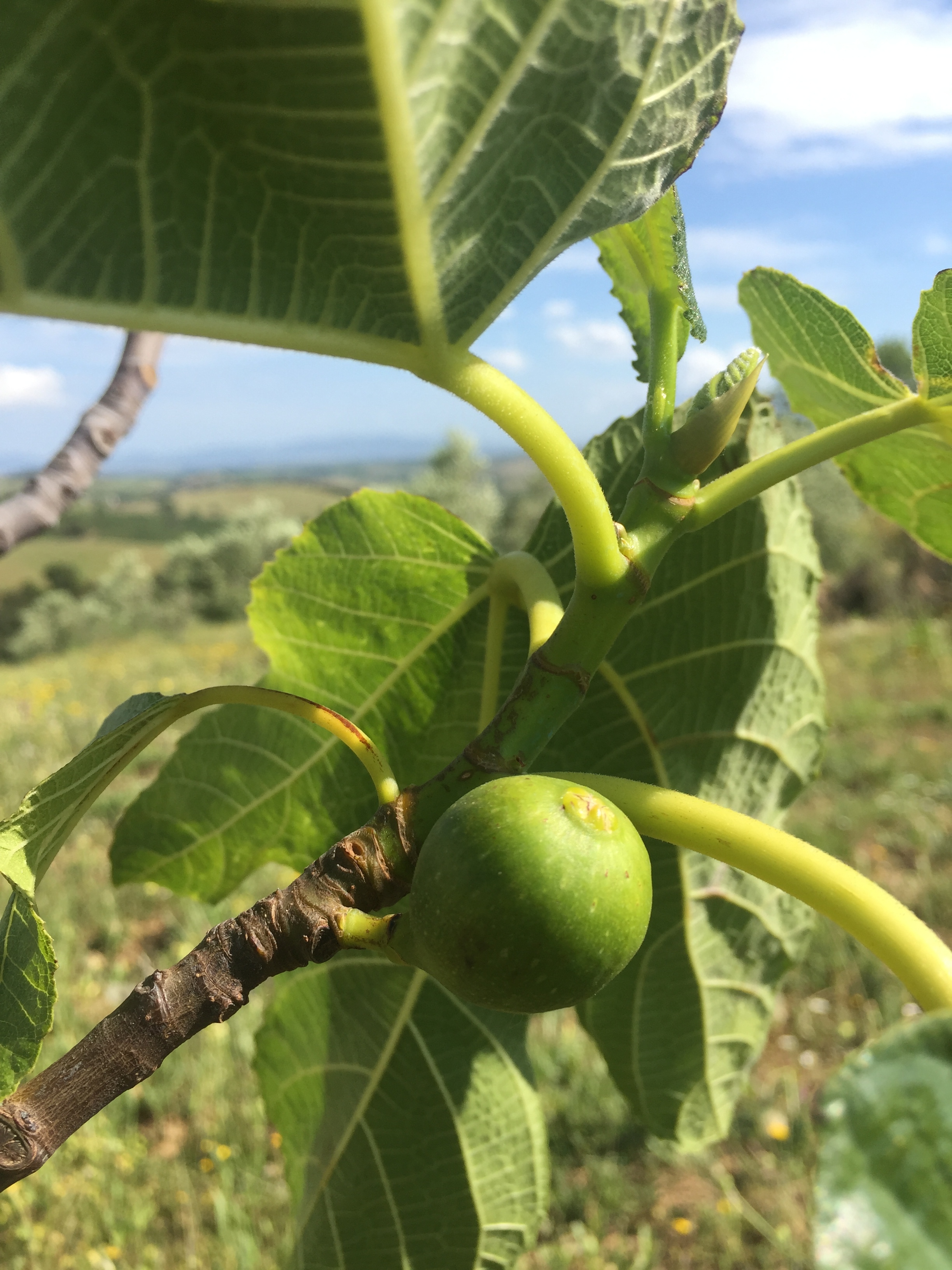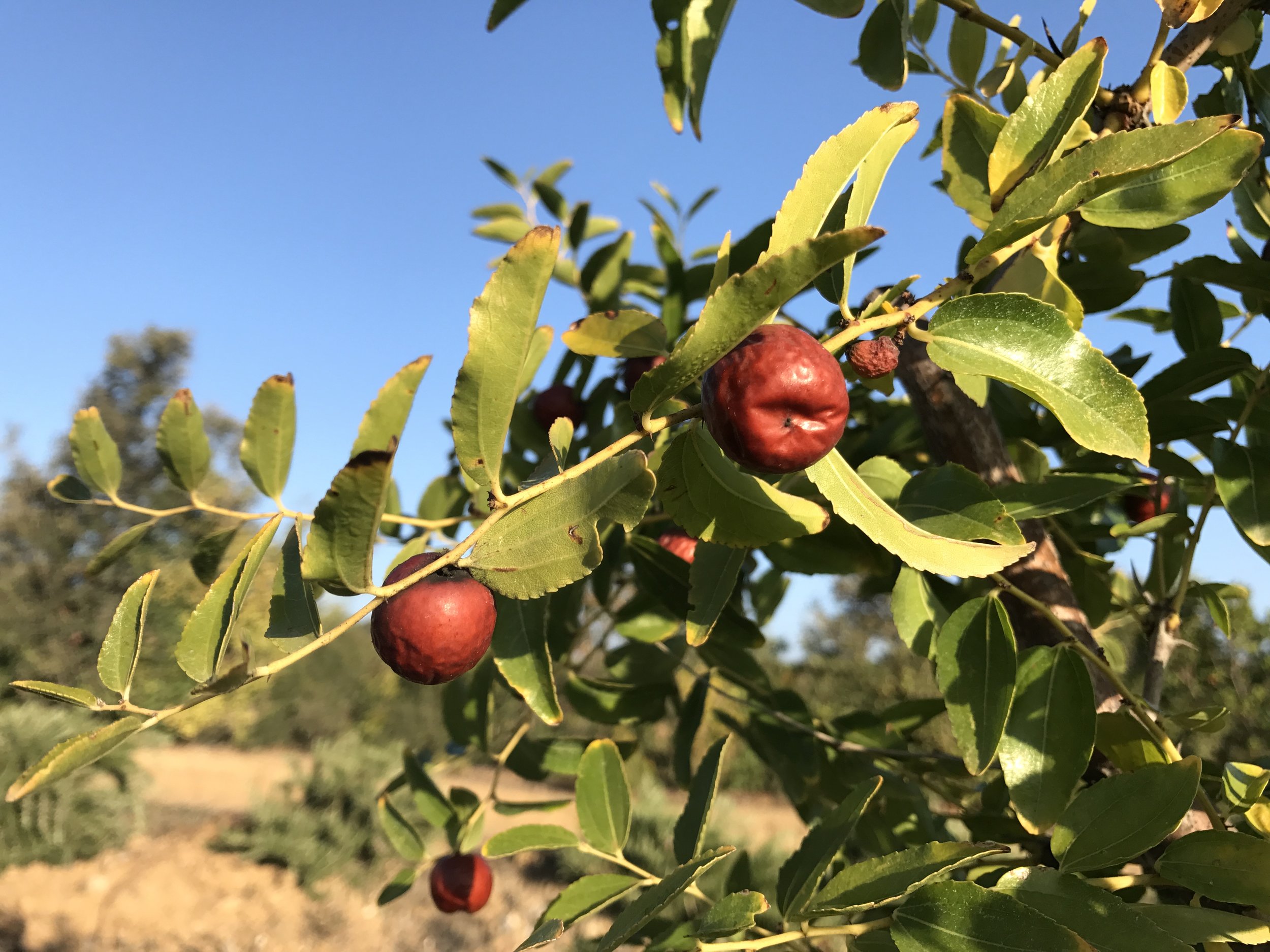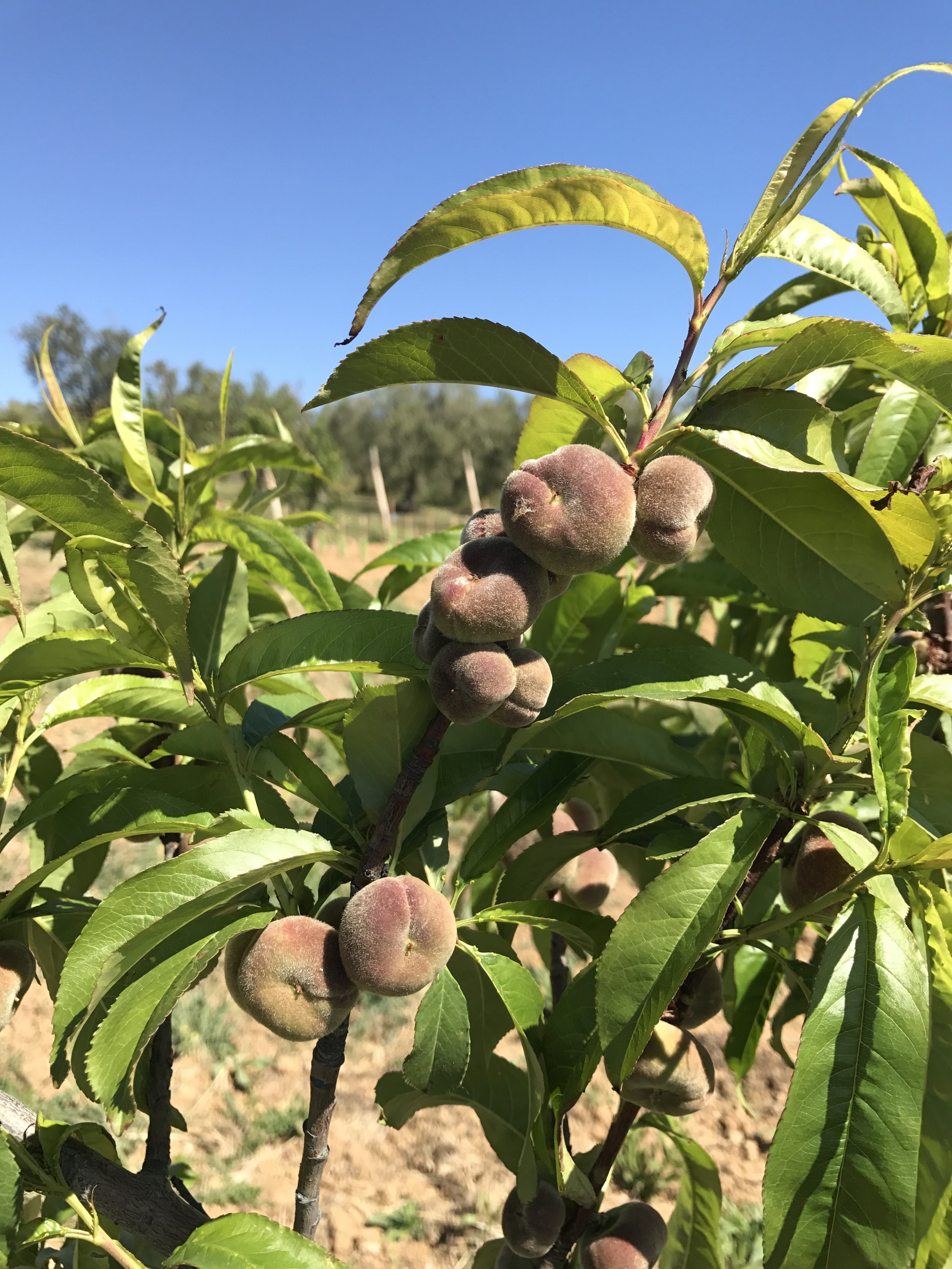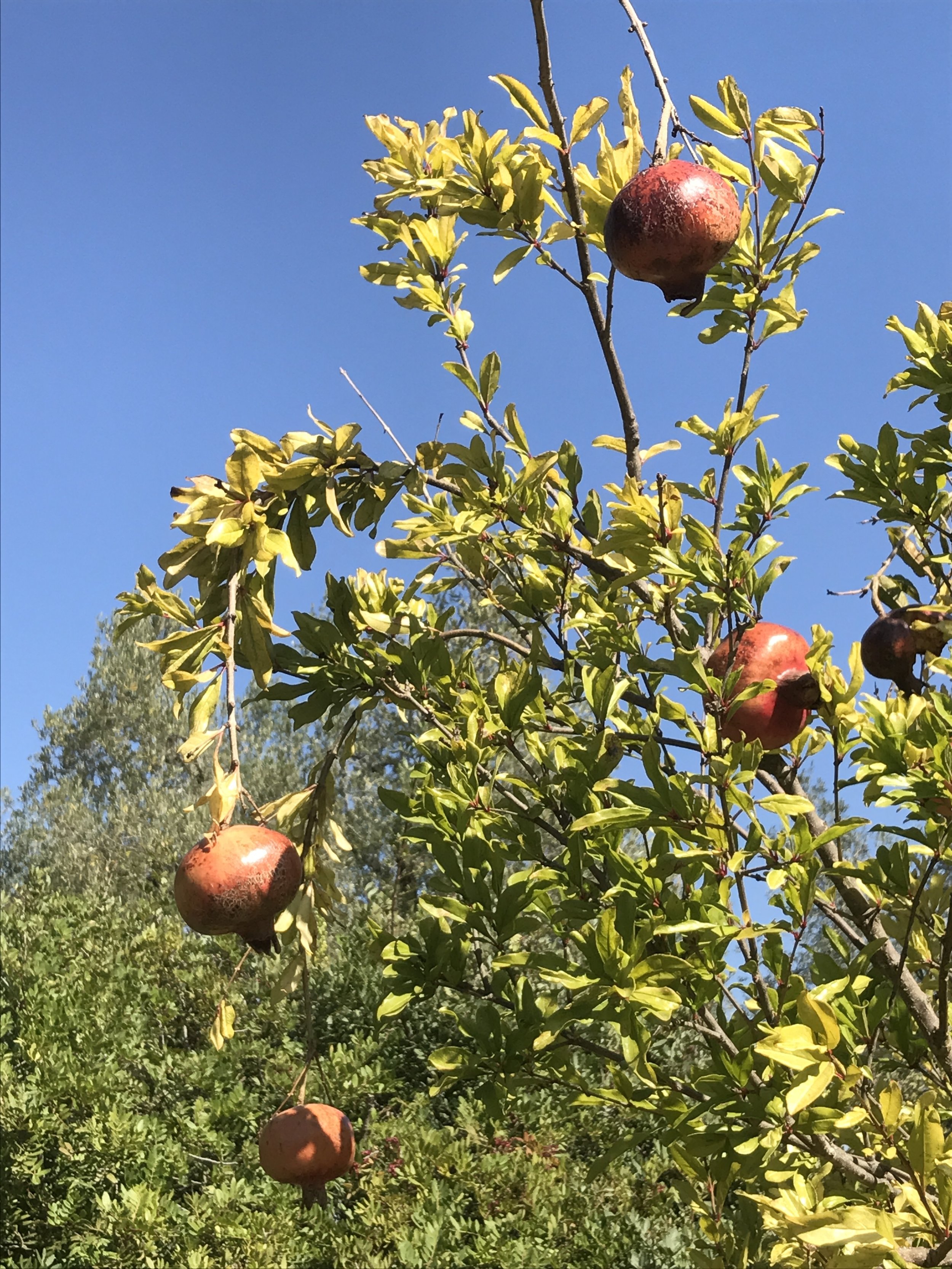An ecological estate must have biodiversity.
BIODIVERSITY HAS OBVIOUS ECOLOGICAL BENEFITS ON THE SOIL AND THE ECOSYSTEM OF INSECTS AND BIRDS
our lavender attracts bees that then can help the cross-pollination of our olive trees during the blooming period, our verbena citronella which makes marvellous herbal tea also keeps mosquitos away from our house.
BIODIVERSITY IS ALSO ESSENTIAL FOR THE CONTINUITY OF AN AGRICULTURAL ACTIVITY
because different cultures require different actions at different times of the year: our vine gets pruned in January and harvested in September whereas our olive trees get pruned from late February on and harvested in October.
BIODIVERSITY ALSO HELPS THE SUSTAINABILITY OF AN AGRICULTURAL ESTATE
as it potentially brings different revenue sources : if a harsh wintery frost hits some olive tree varieties that are less resistant they won’t produce olives that year but other more resistant varieties will and vine and fruit trees will produce anyhow, whereas insects and bacteria would theoretically be eliminated by the cold.
BIODIVERSITY ALSO NEEDS TO BE USED TO CHECK WHAT CULTURES ARE MORE ADAPTED TO OUR LAND
to be sustainable in this changing climate. Indeed seasons are not following the same patterns as they have for the last decades anymore and we need to try new cultures that are more resistant and adapted to drought, frost, strong winds and flood.
“Poggiolecci is thus experimenting, slowly but surely, new cultures”
Fruits (all heirloom varieties that are more resistant and adapted to organic cultivation): quince, fig, prune, almond, apricot, kaki, peach, pomegranate, etc.
Citrus trees: lemon, grapefruit, tangerine, orange, bergamot and kumquat - they are very delicate, and every year is a challenge to keep them alive, but so far we keep trying!
Vine: we have ten varieties of table grapes and two different clones of Sangiovese grape with which we started making wine in 2019.
We also have a small production of aromatics and herbal teas, such as rosemary, laurel, lavender, calendula, mallow, wild fennel and verbena citronella.


